Hexagon tiles have emerged as one of 2025's most captivating bathroom design trends, offering the perfect blend of timeless elegance and contemporary style. These geometric beauties are experiencing a major resurgence, with interior designers embracing everything from classic small-scale mosaics to bold large-format statements. Whether you're planning a complete bathroom renovation or seeking a stylish accent, hexagon tiles provide endless creative possibilities. From their historic roots in 19th-century bathrooms to today's modern interpretations, these six-sided wonders adapt effortlessly to any design aesthetic. The versatility of hexagon tiles allows them to complement styles ranging from vintage farmhouse to sleek minimalist, making them an ideal choice for creating a bathroom that's both on-trend and timelessly appealing.
1. Classic White Small Hexagon Tiles with Dark Grout
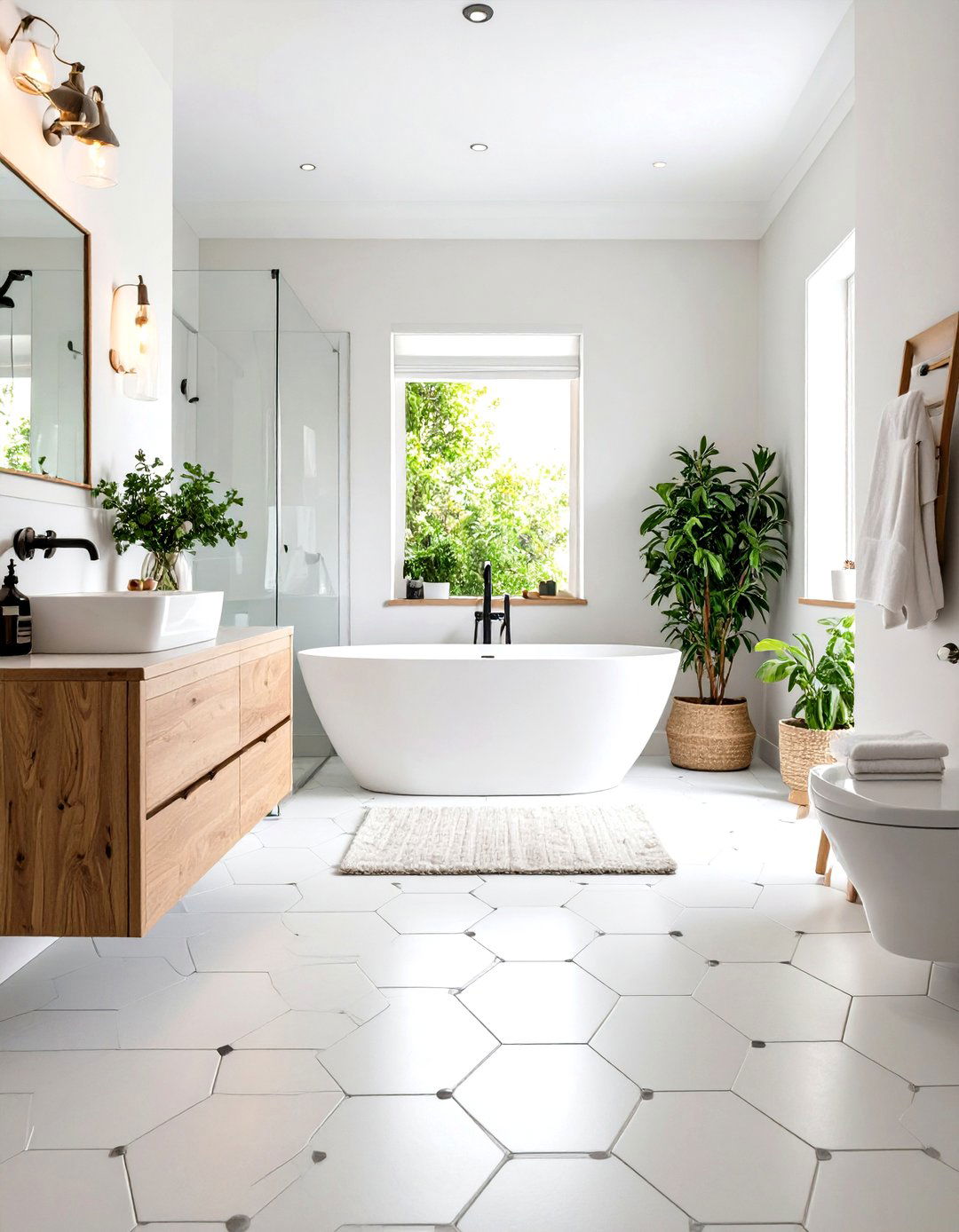
Small white hexagon tiles with black grout create an instantly recognizable vintage charm reminiscent of early 20th-century bathroom designs. This timeless combination works beautifully on bathroom floors, providing excellent slip resistance due to the numerous grout lines. The contrasting dark grout emphasizes each individual hexagon, creating a honeycomb pattern that adds visual texture without overwhelming the space. These tiles are particularly effective in smaller bathrooms where they can make the space appear larger while maintaining classic elegance. The monochromatic palette ensures compatibility with any color scheme, while the small scale allows for easy installation around fixtures and in tight corners. This approach delivers maximum impact with minimal risk, making it perfect for homeowners seeking a tried-and-true design solution.
2. Large Format Hexagon Tiles for Modern Minimalism
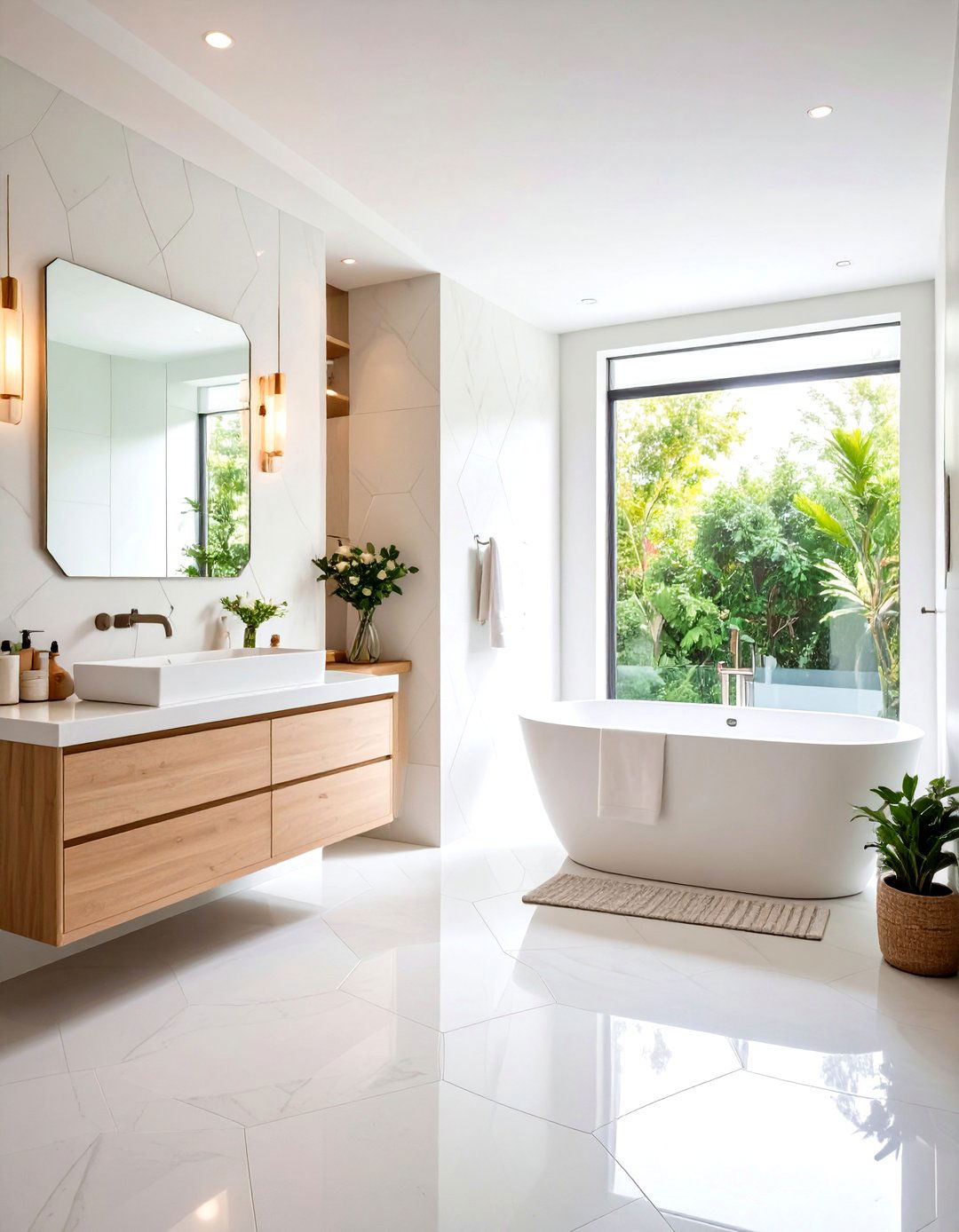
Large hexagon tiles make a bold contemporary statement, creating seamless surfaces with fewer grout lines for a clean, minimalist aesthetic. These oversized tiles work exceptionally well in spacious bathrooms where their scale can be fully appreciated. The reduced grout lines create a more continuous surface that's easier to clean and maintain, while the geometric shape prevents the monotony that large rectangular tiles might create. When installed with minimal grout spacing, large hexagon tiles can create an almost seamless appearance that feels both sophisticated and modern. Available in various materials from porcelain to natural stone, these tiles can anchor a bathroom design with their commanding presence. The larger format also allows for more dramatic veining patterns in marble or stone-look tiles, creating stunning focal points.
3. Dramatic Black Hexagon Tiles with White Grout
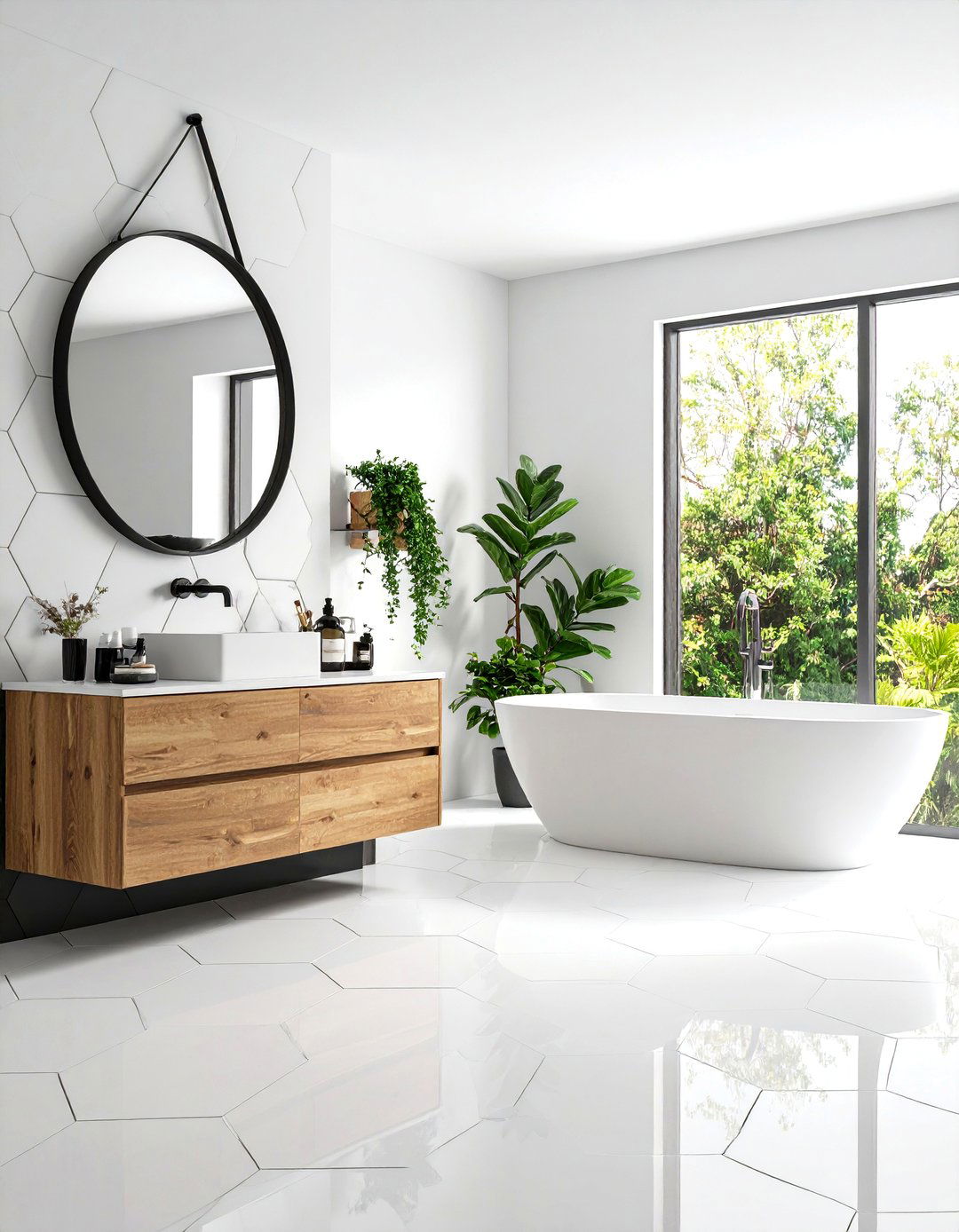
Black hexagon tiles with crisp white grout create striking contrast and sophisticated drama in bathroom designs. This bold approach works particularly well in larger bathrooms where the dark color won't overwhelm the space. The white grout lines create a graphic honeycomb effect that prevents the black tiles from appearing too heavy or oppressive. This color combination pairs beautifully with white fixtures and can be balanced with warm wood accents or brass fixtures for added warmth. The high contrast makes these tiles perfect for creating accent areas, such as behind a freestanding tub or within a shower niche. For those hesitant about extensive black tile use, consider applying this treatment to just one wall or the floor while keeping walls lighter for balance.
4. Luxurious Marble Hexagon Tiles
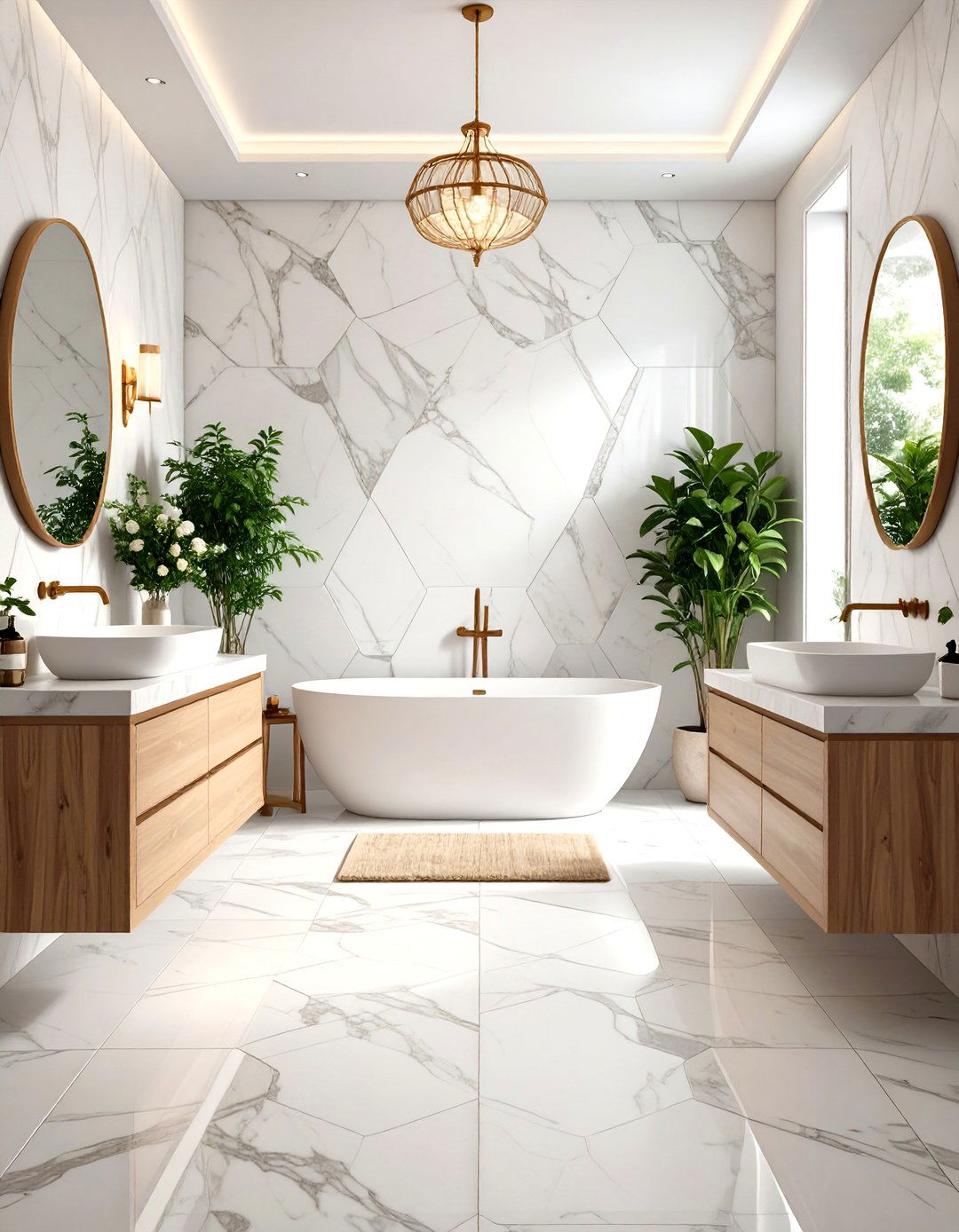
Marble hexagon tiles bring natural elegance with their distinctive veining patterns and timeless sophistication. Carrara marble hexagons remain particularly popular, offering subtle gray veining against a white background that complements virtually any design style. The natural variations in marble mean no two tiles are identical, creating organic beauty that manufactured tiles cannot replicate. These tiles work beautifully in both traditional and contemporary settings, lending themselves to everything from classic European-inspired designs to modern spa-like retreats. The natural stone's depth and character become more pronounced in the hexagonal format, as the angled cuts catch and reflect light differently throughout the day. While requiring more maintenance than porcelain alternatives, marble hexagon tiles offer unmatched luxury and increase property value significantly.
5. Iridescent Glass Hexagon Tiles for Luminous Effects

Glass hexagon tiles create spectacular light-reflecting surfaces that can make bathrooms appear brighter and more spacious. The translucent quality of glass allows light to penetrate and bounce between tiles, creating depth and movement that solid tiles cannot achieve. Iridescent finishes add rainbow-like qualities that shift with viewing angle and lighting conditions. These tiles work particularly well in smaller bathrooms or those with limited natural light, as they help maximize available illumination. The non-porous nature of glass makes these tiles highly resistant to stains and bacteria, making them an excellent choice for wet areas. Color options range from subtle whites and clears to bold blues and greens, allowing for both understated elegance and dramatic statements depending on your design goals.
6. Ocean-Inspired Blue Hexagon Tiles
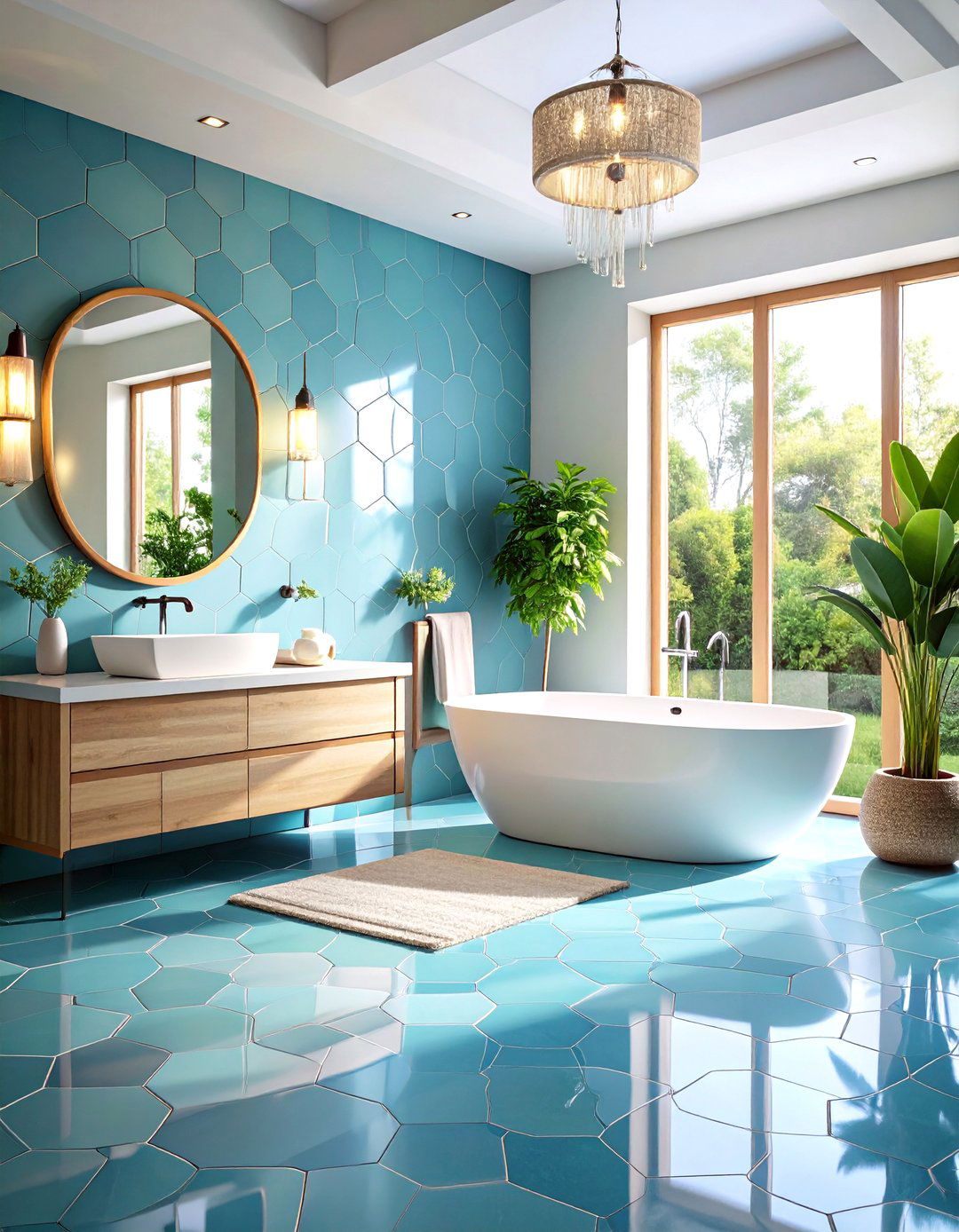
Blue hexagon tiles capture the calming essence of water, creating spa-like atmospheres perfect for relaxation. From soft powder blues to deep navy tones, these tiles can evoke anything from tropical lagoons to sophisticated nautical themes. Sea-inspired hues are trending strongly in 2025 bathroom designs, bringing tranquil energy to daily routines. Lighter blue shades work excellently in smaller spaces, maintaining airiness while adding color interest. Deeper blues create dramatic accent walls or floors that pair beautifully with white fixtures and brass or chrome accessories. The hexagonal shape enhances the organic, water-like quality of blue tiles, creating patterns that feel naturally flowing rather than rigid. Consider gradient installations using multiple blue shades for an ombre effect that mimics ocean depths.
7. Mixed Pattern Hexagon Tiles for Custom Designs
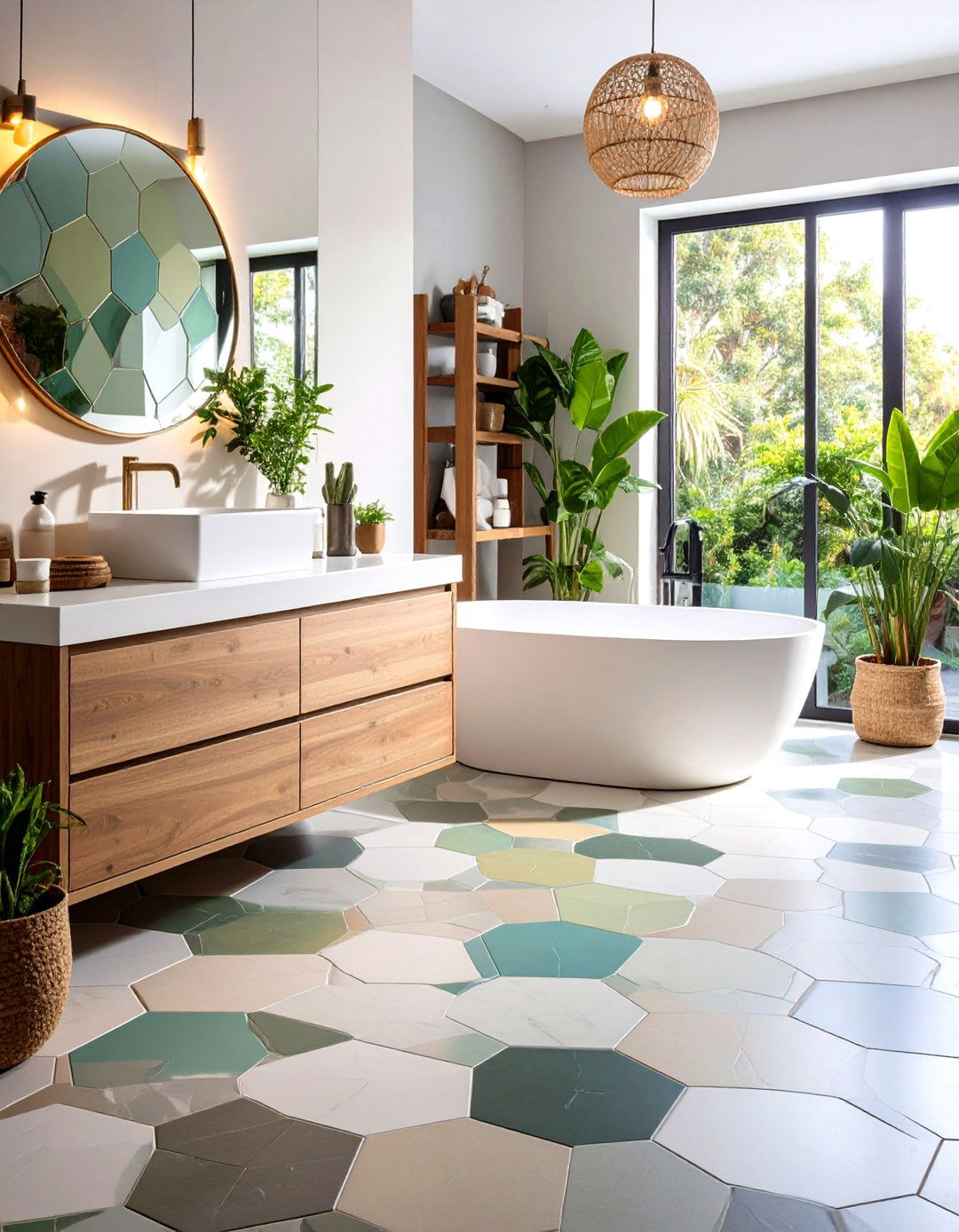
Creating custom patterns with multiple colored hexagon tiles allows for truly unique bathroom designs that reflect personal style. This approach can range from subtle variations using different shades of the same color to bold geometric patterns incorporating high-contrast hues. Three-dimensional effects can be achieved by strategically placing different colored tiles to create optical illusions. Popular patterns include flower motifs using center tiles in one color surrounded by petals in another, or random scatter patterns for more organic feels. The key to successful mixed patterns lies in maintaining balance – too many colors can appear chaotic, while too few might lack impact. Consider using one dominant color with accent colors comprising no more than 20-30% of the total installation for the most pleasing results.
8. Hexagon Tiles for Slip-Resistant Shower Floors

Small hexagon tiles excel as shower flooring due to their numerous grout lines providing enhanced traction on wet surfaces. The increased grout coverage creates natural slip resistance while maintaining aesthetic appeal. Anti-slip glass hexagon tiles are particularly effective, combining safety with easy maintenance. The smaller scale allows for proper sloping toward drains while accommodating curved shower bases or custom layouts. Neutral colors like white, gray, or beige work best for shower floors as they're less likely to show soap scum or water spots. The hexagonal shape also allows for creative drain placement and border treatments that rectangular tiles cannot achieve as easily. For ultimate luxury, consider heated flooring systems beneath hexagon tile shower floors for year-round comfort.
9. Statement Hexagon Tiles for Accent Walls
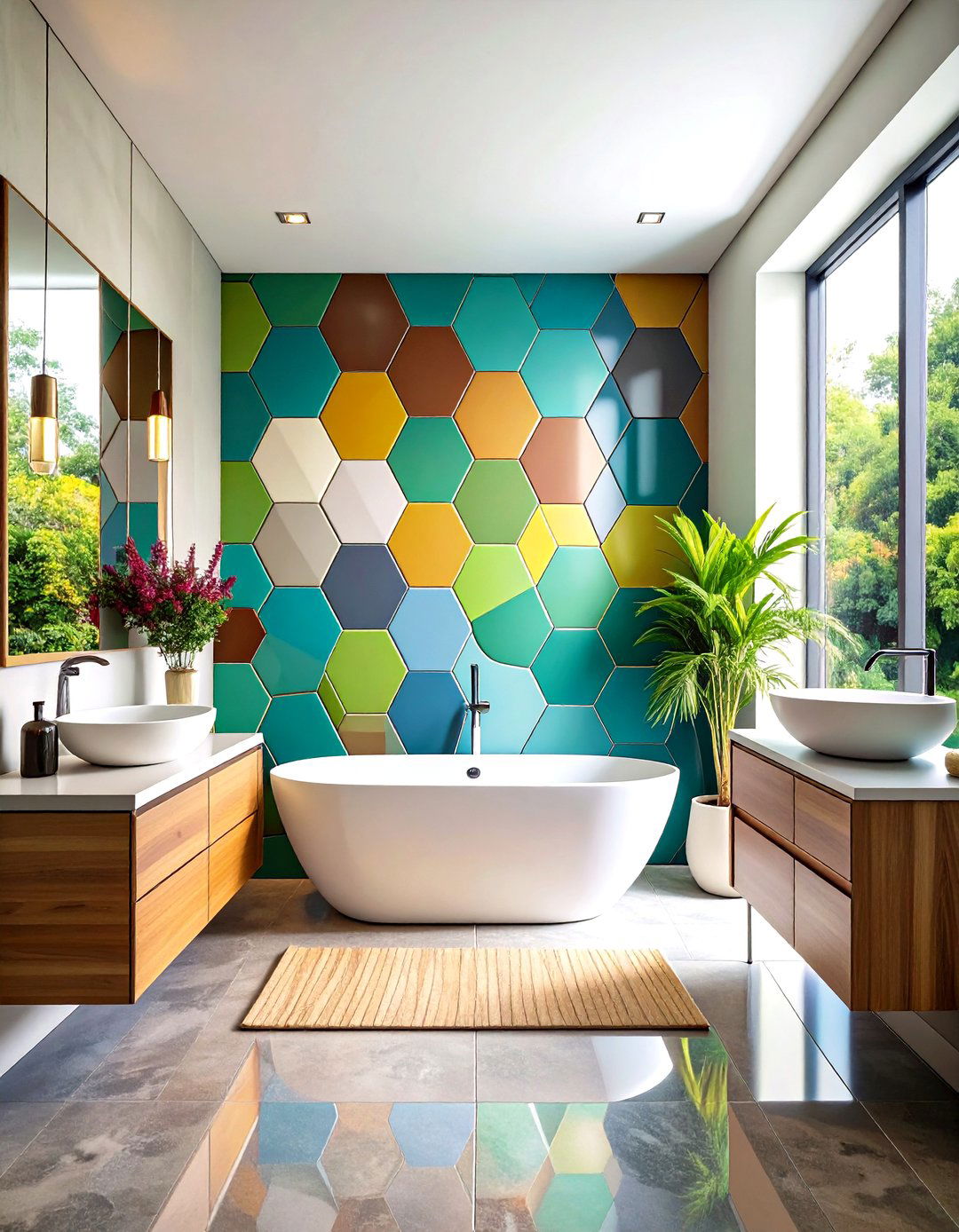
Extending hexagon tiles beyond traditional shower areas to create dramatic accent walls adds character and depth to bathroom designs. Feature walls behind vanities, around bathtubs, or extending from floor to ceiling can transform ordinary bathrooms into designer showpieces. Bold patterns or vibrant colors work particularly well for accent applications where they won't overwhelm the entire space. Consider using larger format hexagons for accent walls to reduce visual busyness while maintaining geometric interest. Patterned hexagon tiles with textile-inspired designs can provide wallpaper-like effects without moisture concerns. The key is balancing the accent wall with simpler treatments elsewhere to prevent sensory overload while ensuring the hexagonal feature remains the focal point.
10. Hexagon Tiles for Sophisticated Vanity Backsplashes
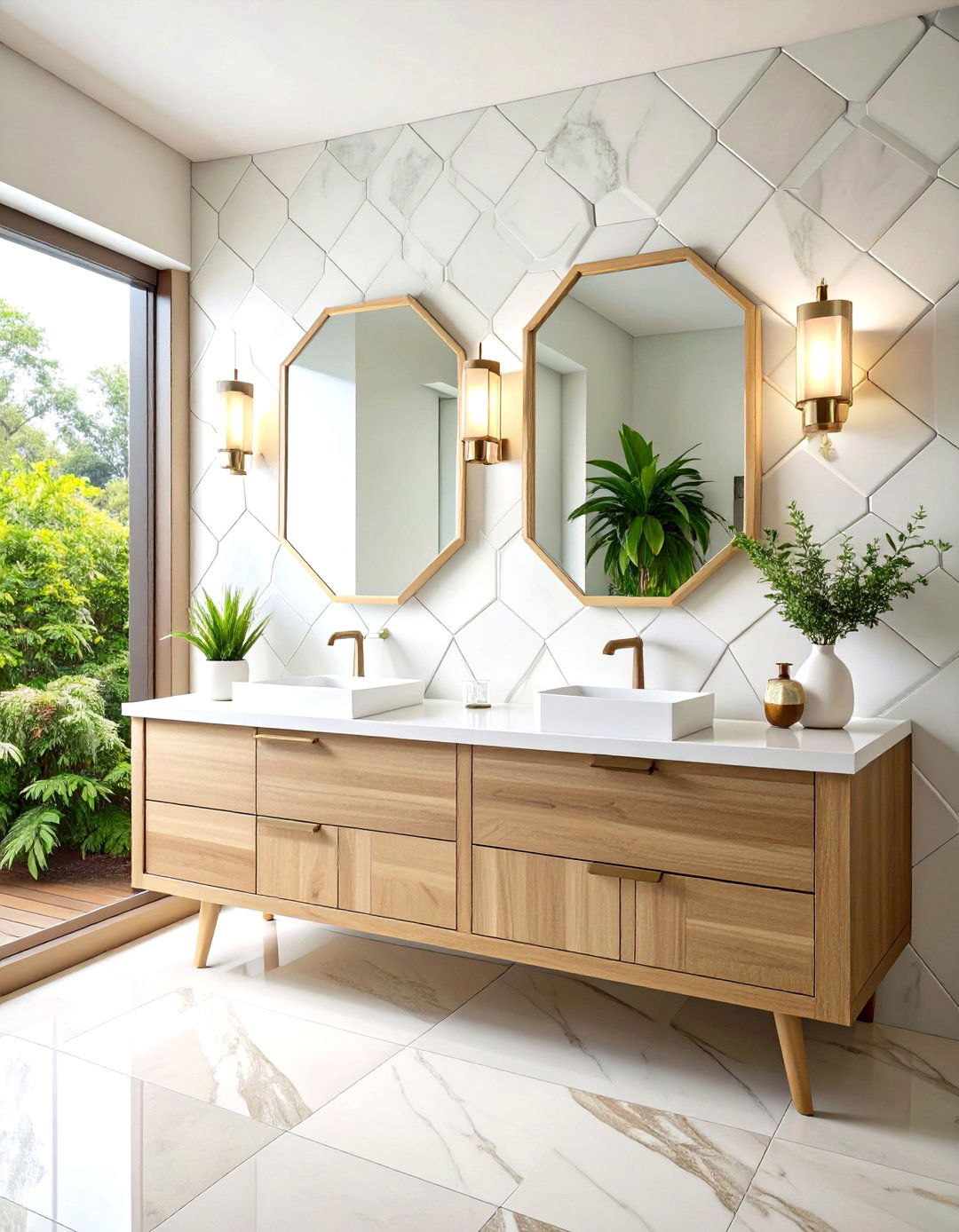
Hexagon tile backsplashes behind bathroom vanities create functional and beautiful focal points that protect walls while adding style. This application allows for bolder color or pattern choices since the area is smaller and more contained than full wall treatments. Marble or stone-look hexagon tiles work particularly well for vanity backsplashes, providing luxury without the expense of full wall installation. The height typically ranges from countertop to mirror, creating defined zones that enhance the vanity's importance in the room layout. Consider metallic or glass hexagon tiles for backsplashes to create glamorous light-reflecting surfaces that enhance morning and evening routines. The geometric pattern adds visual interest that flat rectangular tiles cannot match, while the six-sided shape complements round mirrors and curved fixtures beautifully.
11. Textured Hexagon Tiles for Tactile Interest
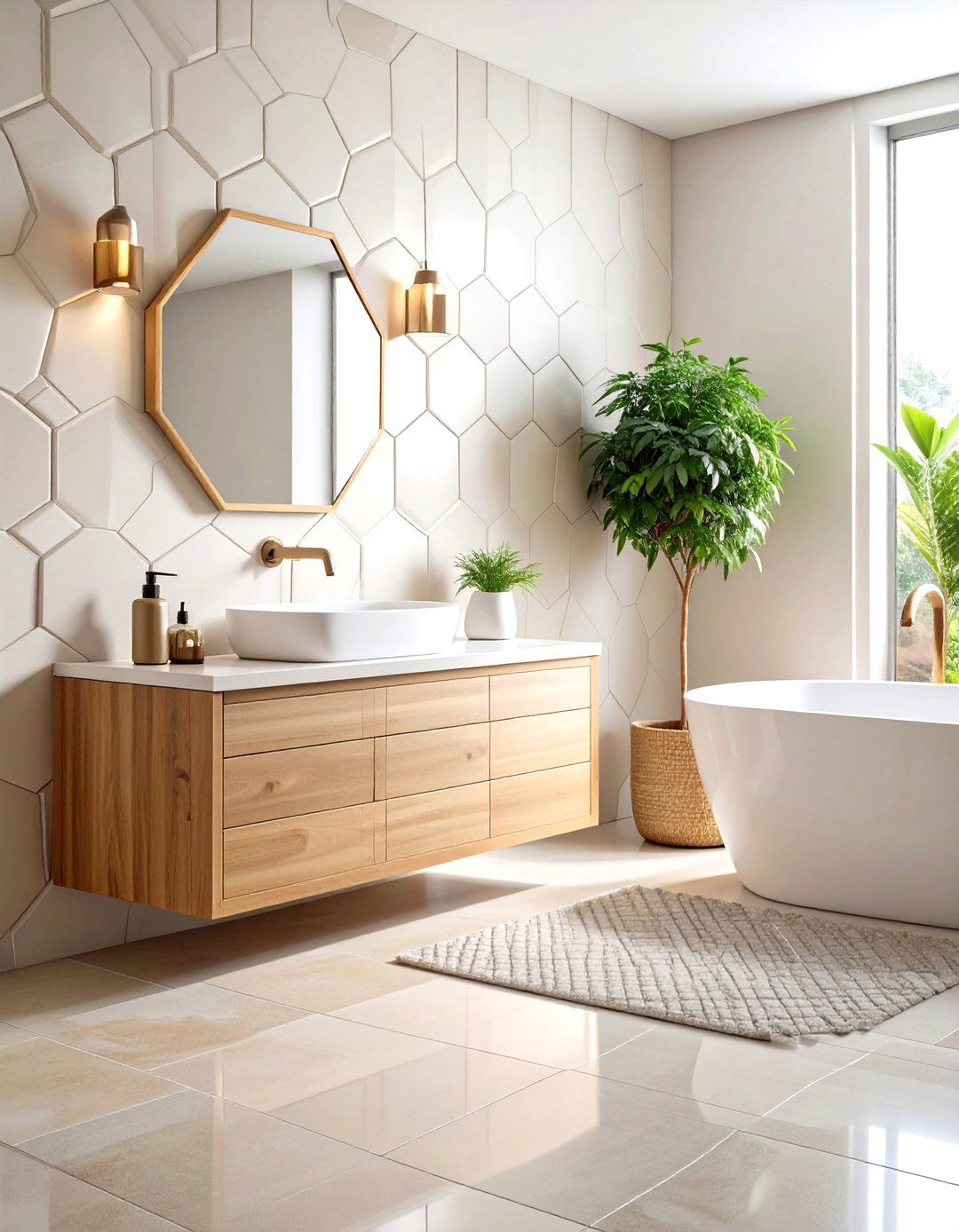
Textured hexagon tiles add three-dimensional depth and tactile appeal that flat surfaces cannot provide. Relief patterns, raised surfaces, and carved details create shadow lines that change throughout the day as lighting shifts. These tiles work particularly well for accent areas where guests might naturally touch the surface, such as around light switches or towel bars. The texture helps hide fingerprints and minor surface imperfections while adding sophisticated depth to bathroom designs. Materials like ceramic and porcelain can be molded into various relief patterns, from subtle linear textures to dramatic geometric raised elements. Natural stone hexagon tiles often feature inherent textures that enhance their organic appeal. Balance textured hexagon areas with smooth surfaces elsewhere to prevent overwhelming sensory input while maintaining visual interest.
12. Sustainable Terrazzo Hexagon Tiles
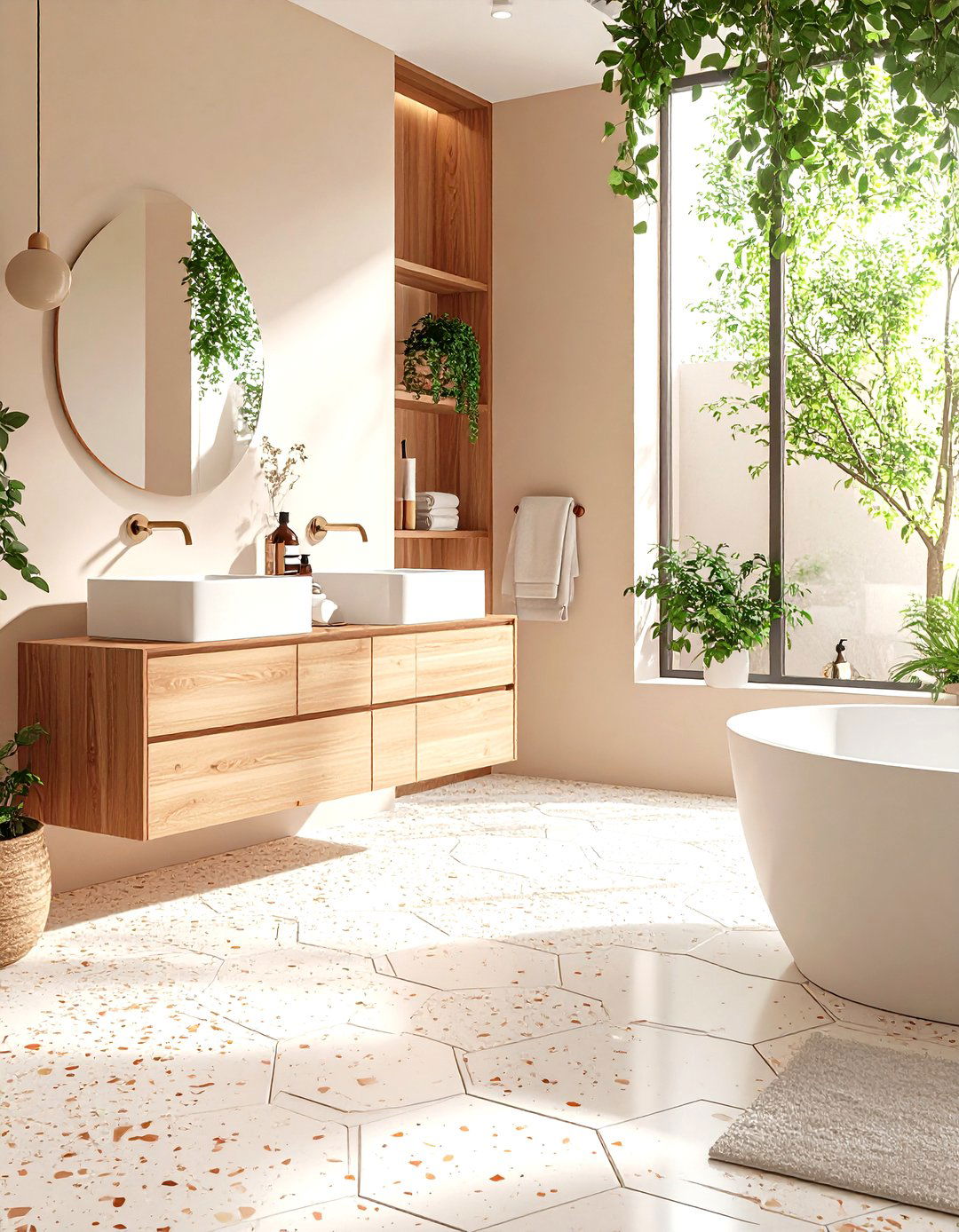
Terrazzo hexagon tiles offer sustainable beauty using recycled materials while providing centuries-proven durability. These tiles combine marble chips, glass fragments, and other recycled materials in a matrix that creates unique speckled patterns. Sustainability is a major 2025 bathroom trend, making terrazzo hexagons an environmentally conscious choice. The inherent variation in terrazzo means each tile has slight differences, creating organic beauty that machine-made tiles cannot replicate. Available in countless color combinations, terrazzo hexagon tiles can complement any design palette while providing practical benefits like stain resistance and easy maintenance. The material's density makes it naturally slip-resistant, perfect for bathroom applications. Modern terrazzo techniques allow for more consistent quality and appearance than historical versions while maintaining the material's distinctive character.
13. Wood-Look Hexagon Tiles for Warm Sophistication
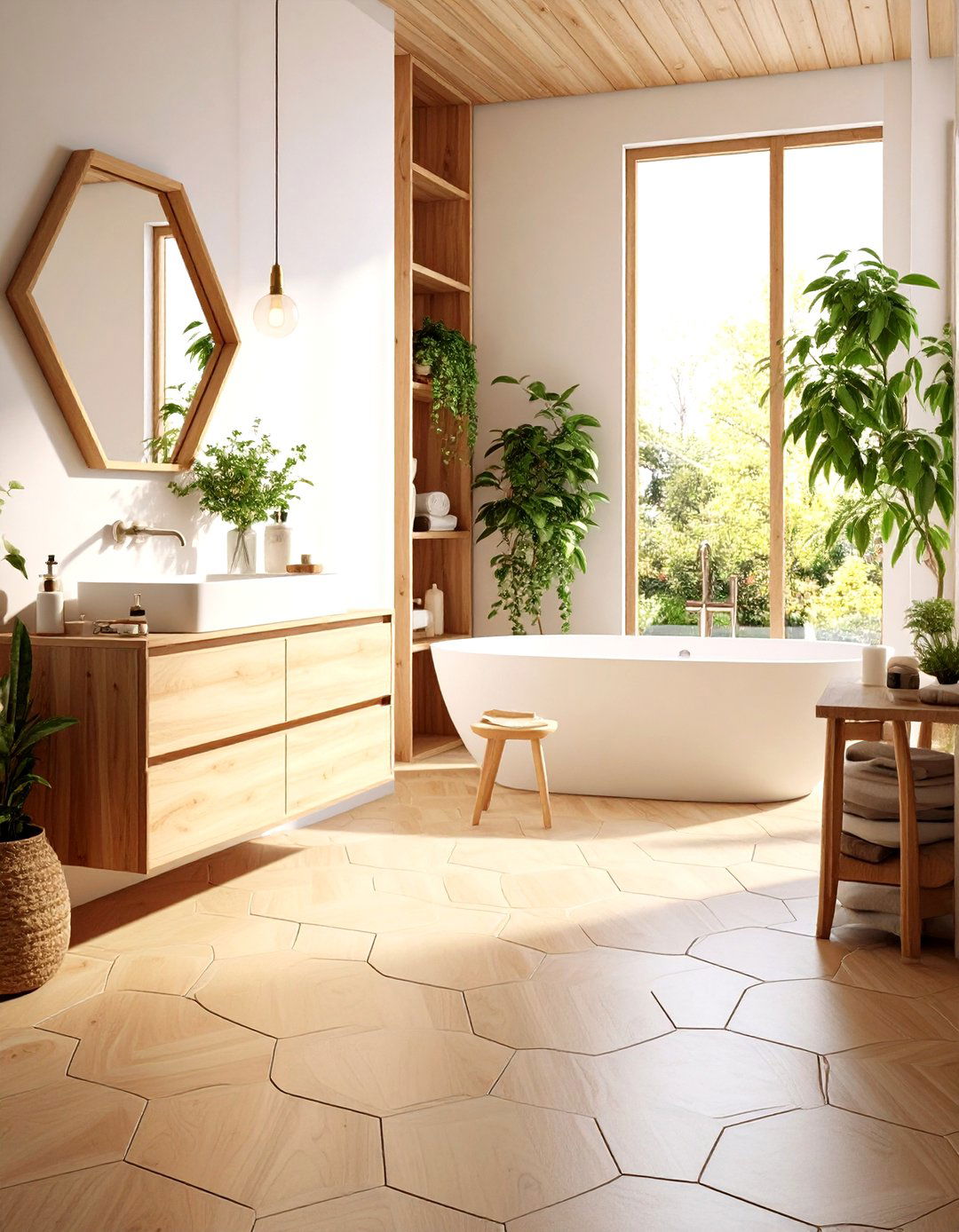
Wood-look hexagon tiles combine the warmth of natural timber with the practicality of ceramic or porcelain. These tiles capture wood's grain patterns and color variations while providing water resistance that genuine wood cannot offer in bathroom environments. The hexagonal format prevents wood-look tiles from appearing too linear or predictable, creating more organic, natural patterns. Various wood species can be replicated, from light oak and maple to darker walnut and ebony tones. The geometric shape works particularly well with Scandinavian and modern farmhouse design styles, adding warmth without sacrificing contemporary edge. These tiles often feature subtle sheen variations that mimic natural wood's varying grain density. Consider using wood-look hexagon tiles for flooring paired with complementary wall treatments for cohesive, spa-like atmospheres.
14. Metallic Hexagon Tiles for Glamorous Luxury
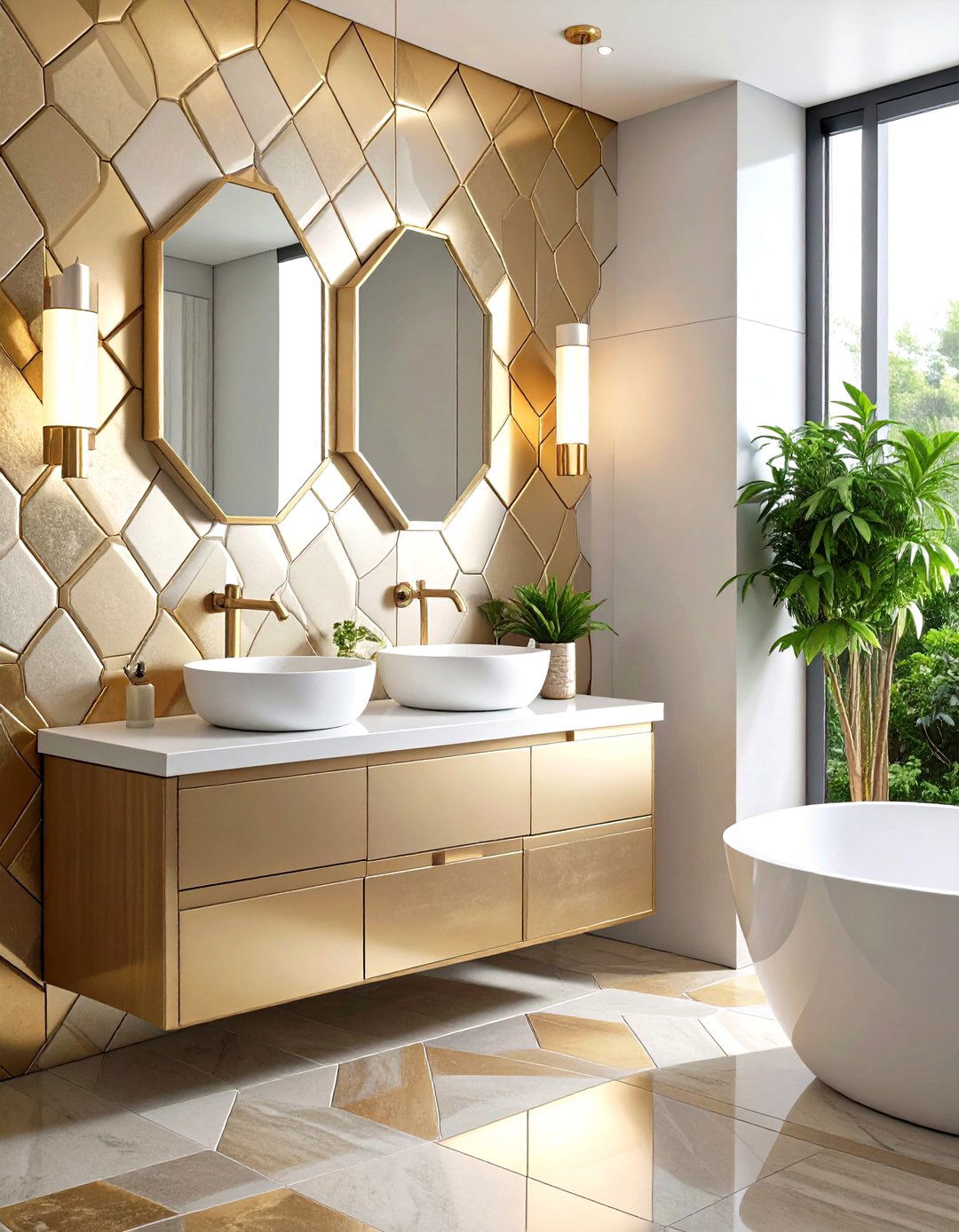
Metallic finish hexagon tiles add glamorous sophistication with gold, bronze, silver, and copper tones that catch and reflect light beautifully. These tiles work particularly well as accent elements or in smaller bathrooms where their reflective qualities can maximize apparent space. When wet, metallic tiles become even more lustrous, making them perfect for shower applications where water enhances their beauty. The key to successful metallic tile use lies in restraint – consider using them for single accent walls, niches, or borders rather than overwhelming entire spaces. Glass mosaic hexagon tiles with metallic finishes provide the most dramatic light-reflecting effects. Pair metallic hexagon tiles with minimalist fixtures in matching finishes to create cohesive, luxurious environments that feel intentionally designed rather than accidentally flashy.
15. Gradient Ombre Hexagon Tiles for Artistic Flow
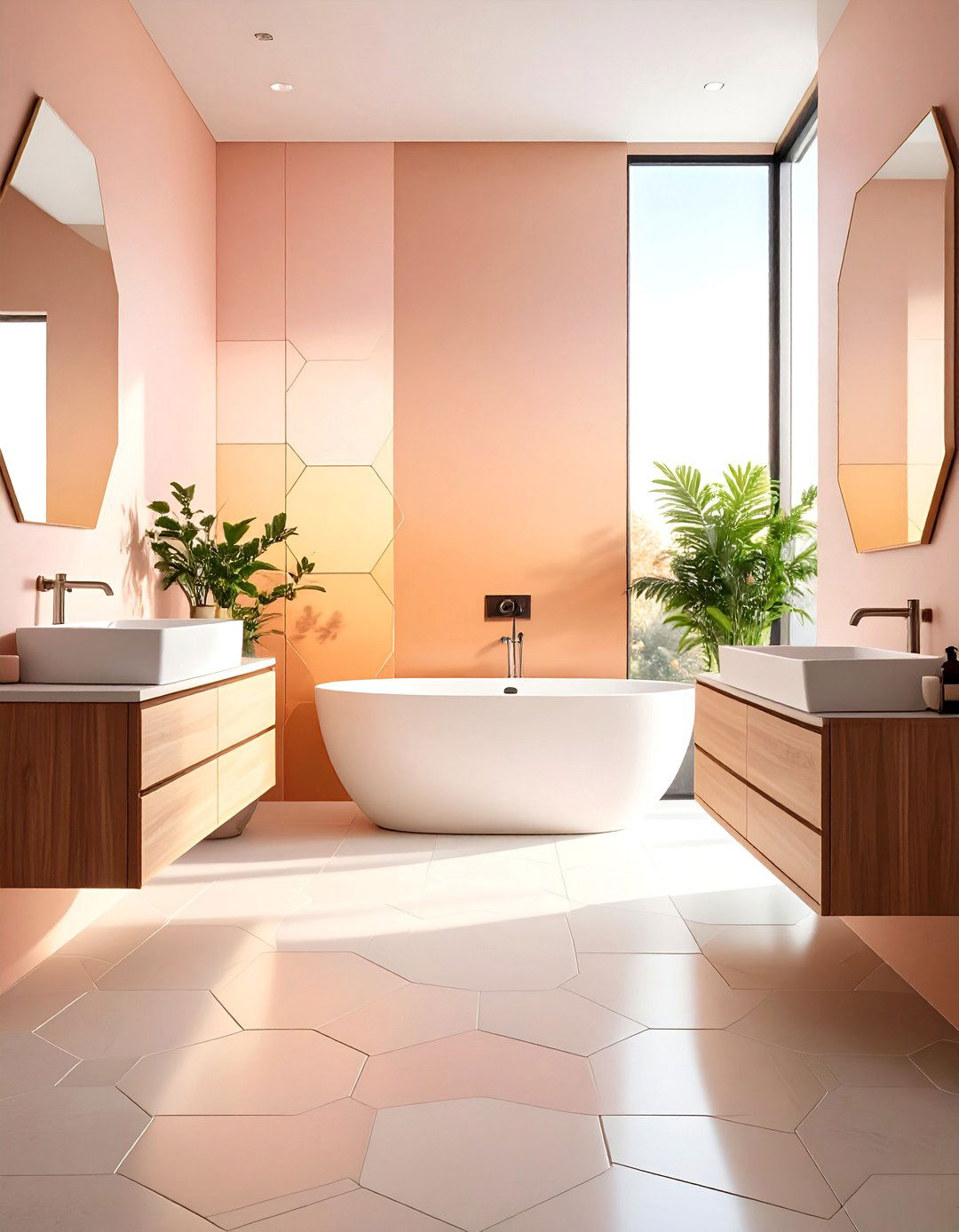
Ombre gradient effects using hexagon tiles in varying shades create artistic walls that flow from light to dark or between complementary colors. This technique works beautifully for feature walls, shower surrounds, or floor installations where the color transition can be fully appreciated. Multiple shades of the same color family create the most sophisticated gradients, from white through gray to charcoal, or from pale blue through navy. The hexagonal shape enhances gradient effects because the angled edges create more complex color interactions than rectangular tiles. Installation requires careful planning to ensure smooth color transitions that appear intentional rather than random. Consider starting with lighter shades at eye level and progressing to darker tones toward the floor for grounding effects, or reverse the pattern for more dramatic impact.
16. Hexagon Tiles with Decorative Border Patterns
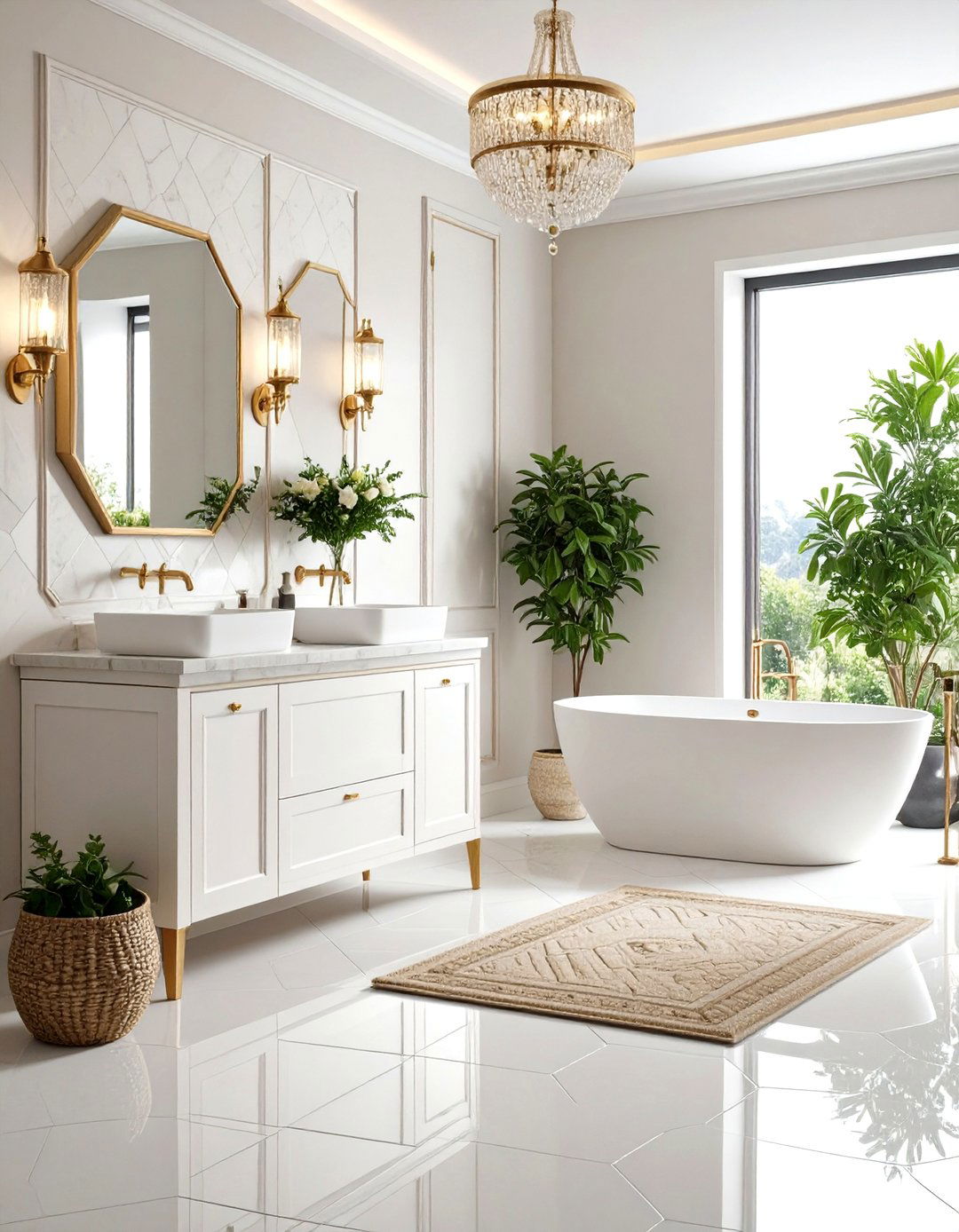
Hexagon tiles excel at creating decorative borders and trim patterns that add refined detail to bathroom designs. Traditional rosette patterns using center hexagons surrounded by contrasting border tiles create classic elegance reminiscent of historical installations. Border treatments can define specific areas like vanity zones, shower surrounds, or floor perimeters while maintaining overall design cohesion. Consider using smaller hexagon mosaics for intricate border work paired with larger format tiles for main areas. Vintage-inspired patterns from early 20th century designs are experiencing renewed popularity in contemporary bathrooms. The key lies in choosing border patterns that complement rather than compete with the primary tile installation, using colors that enhance without overwhelming the overall design scheme.
17. Oversized Statement Hexagon Tiles
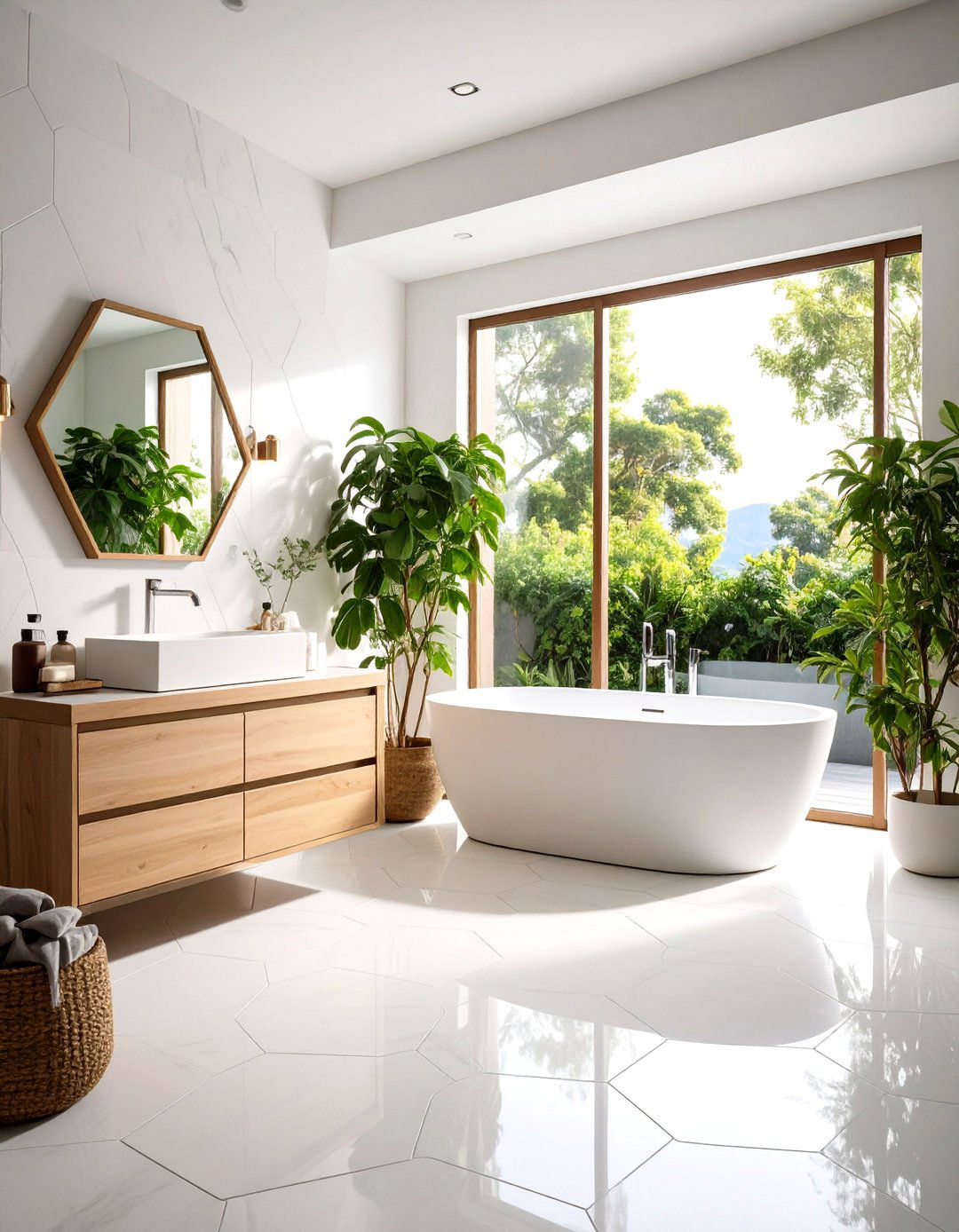
Extra-large hexagon tiles create bold architectural statements that work particularly well in spacious contemporary bathrooms. These dramatic tiles, often 8 inches or larger across, can cover significant wall or floor areas with minimal grout lines for sleek, modern appearances. The large scale allows for impressive marble veining patterns or dramatic color statements that smaller tiles cannot achieve. Installation requires careful planning and professional expertise due to size and weight considerations, but the results create uniquely sophisticated spaces. Large format hexagon tiles work particularly well for minimalist designs where simplicity and scale create impact rather than pattern complexity. Consider using these tiles for single dramatic walls paired with simpler treatments elsewhere to maintain balance while showcasing the tiles' impressive scale and beauty.
18. Penny Round Hexagon Tiles for Vintage Charm
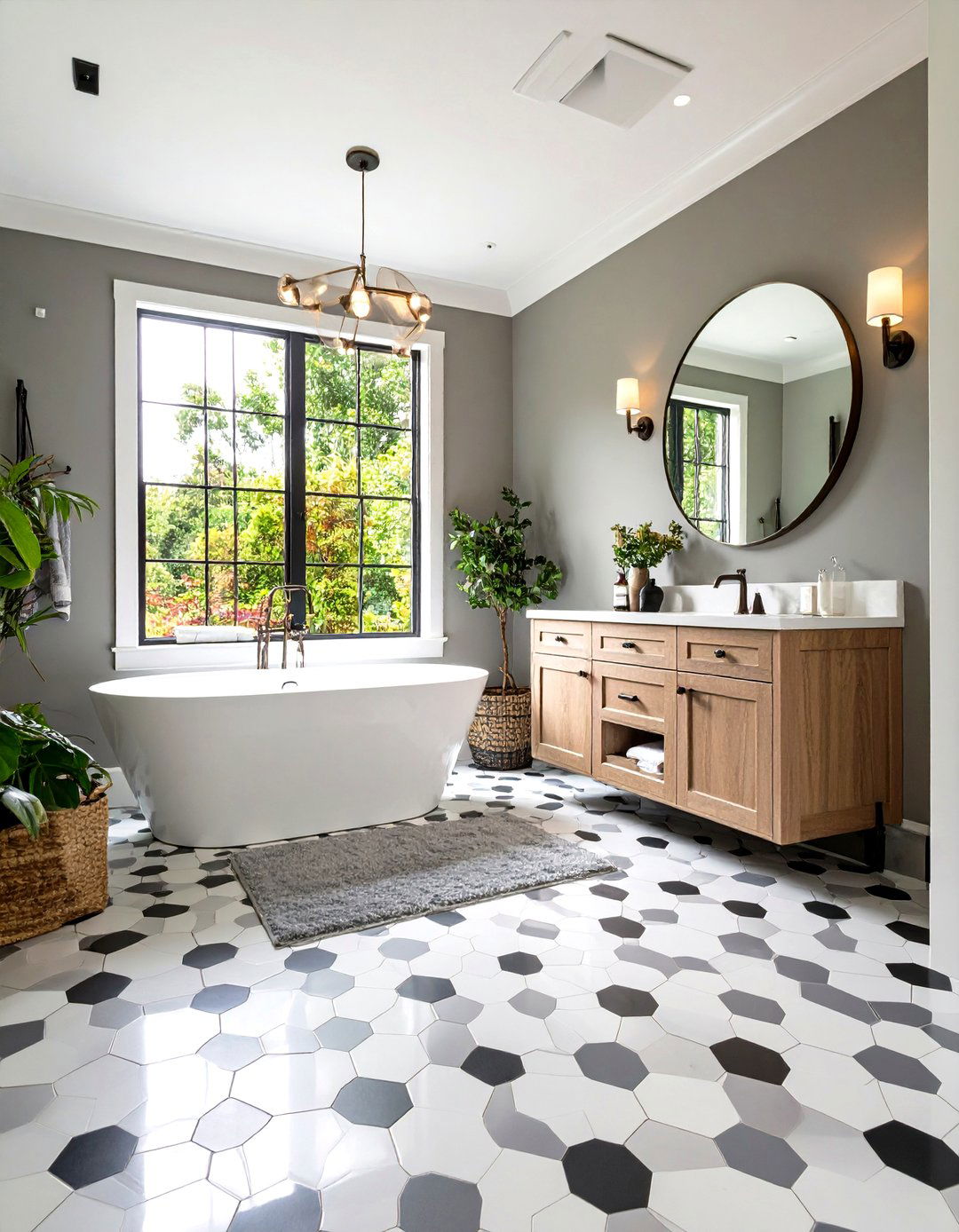
Small penny-round hexagon tiles evoke classic vintage bathroom charm while providing practical benefits for modern installations. These tiny tiles, typically one inch or smaller, create intricate honeycomb patterns that work beautifully for floors, shower bases, and accent areas. The small scale references historical bathroom designs from the early 1900s when such installations were standard in luxury hotels and homes. The numerous grout lines provide excellent slip resistance, making penny hexagons ideal for wet areas. Black and white combinations create timeless sophistication, while single colors offer more contemporary approaches. Despite their vintage associations, penny hexagon tiles work well in modern contexts when paired with contemporary fixtures and finishes, creating interesting temporal contrasts that feel fresh and unexpected.
19. Patterned Print Hexagon Tiles for Artistic Expression
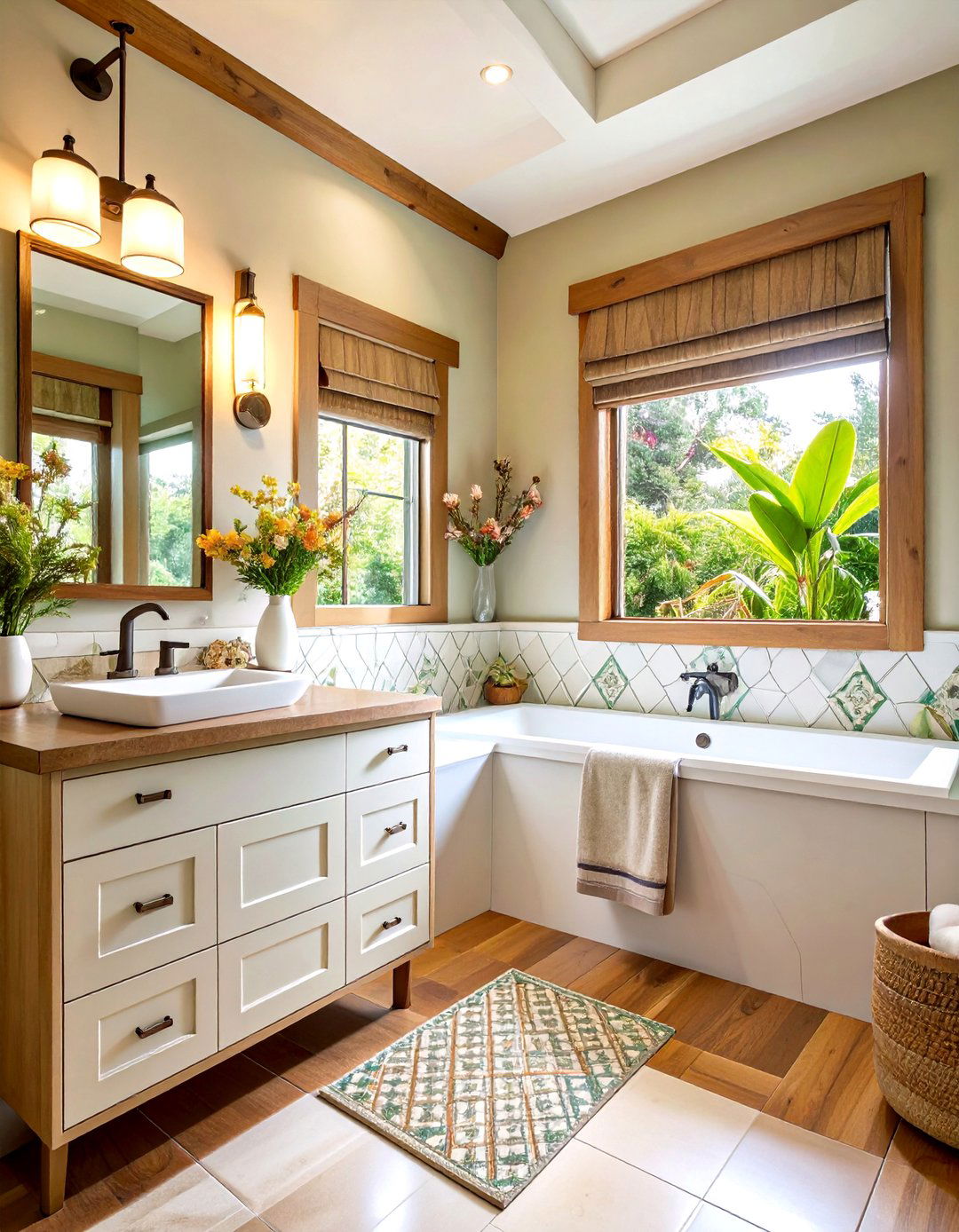
Printed pattern hexagon tiles featuring geometric designs, florals, or artistic motifs bring personality and unique character to bathroom installations. These tiles function as functional art pieces, transforming walls into gallery-worthy installations. Moorish-inspired patterns with curved and pinched details add exotic sophistication to contemporary bathrooms. The key to successful patterned hexagon use lies in restraint – consider featuring them in specific zones like shower niches, vanity backsplashes, or single accent walls rather than overwhelming entire spaces. Pattern mixing using hexagon tiles in different designs but coordinated colors creates sophisticated complexity without chaos. Modern printing techniques allow for incredibly detailed and durable patterns that maintain their beauty even in high-moisture environments, making artistic expression practical for bathroom applications.
20. Mixed Material Hexagon Tiles for Textural Contrast

Combining different materials within hexagon tile installations creates sophisticated textural contrasts that add depth and visual interest. Popular combinations include glass and stone, metal and ceramic, or matte and glossy finishes within the same color palette. Mixed textures work particularly well for shower installations where water interaction enhances material differences. The hexagonal shape unifies different materials while allowing each to maintain its distinctive characteristics. Natural materials like stone paired with manufactured glass create organic-modern combinations that feel both earthy and contemporary. Consider using mixed materials strategically – perhaps glossy tiles for areas requiring easy cleaning paired with textured tiles for visual interest in less functional zones. The key lies in maintaining color harmony while varying textures for sophisticated complexity that rewards closer inspection.
Conclusion:
Hexagon tiles offer unparalleled versatility for creating stunning bathroom designs that balance timeless appeal with contemporary style. From classic small-scale mosaics to bold large-format statements, these geometric beauties adapt to any aesthetic while providing practical benefits like slip resistance and visual interest. Whether you choose luxurious marble, practical porcelain, or glamorous glass, hexagon tiles ensure your bathroom renovation will remain stylish for years to come. The twenty ideas presented showcase just a fraction of possibilities available with these six-sided wonders, proving that geometric design can be both sophisticated and accessible for any budget or style preference.


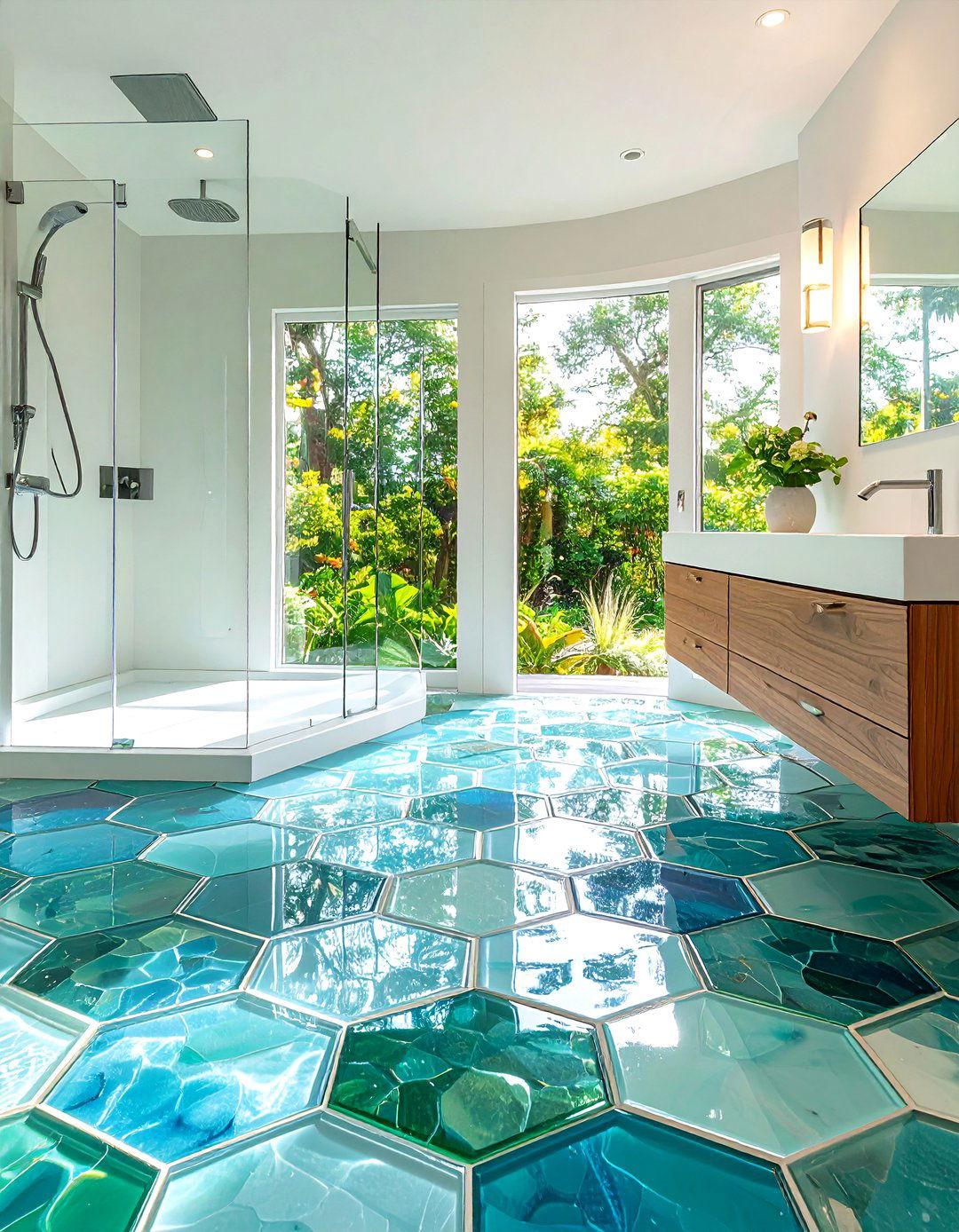
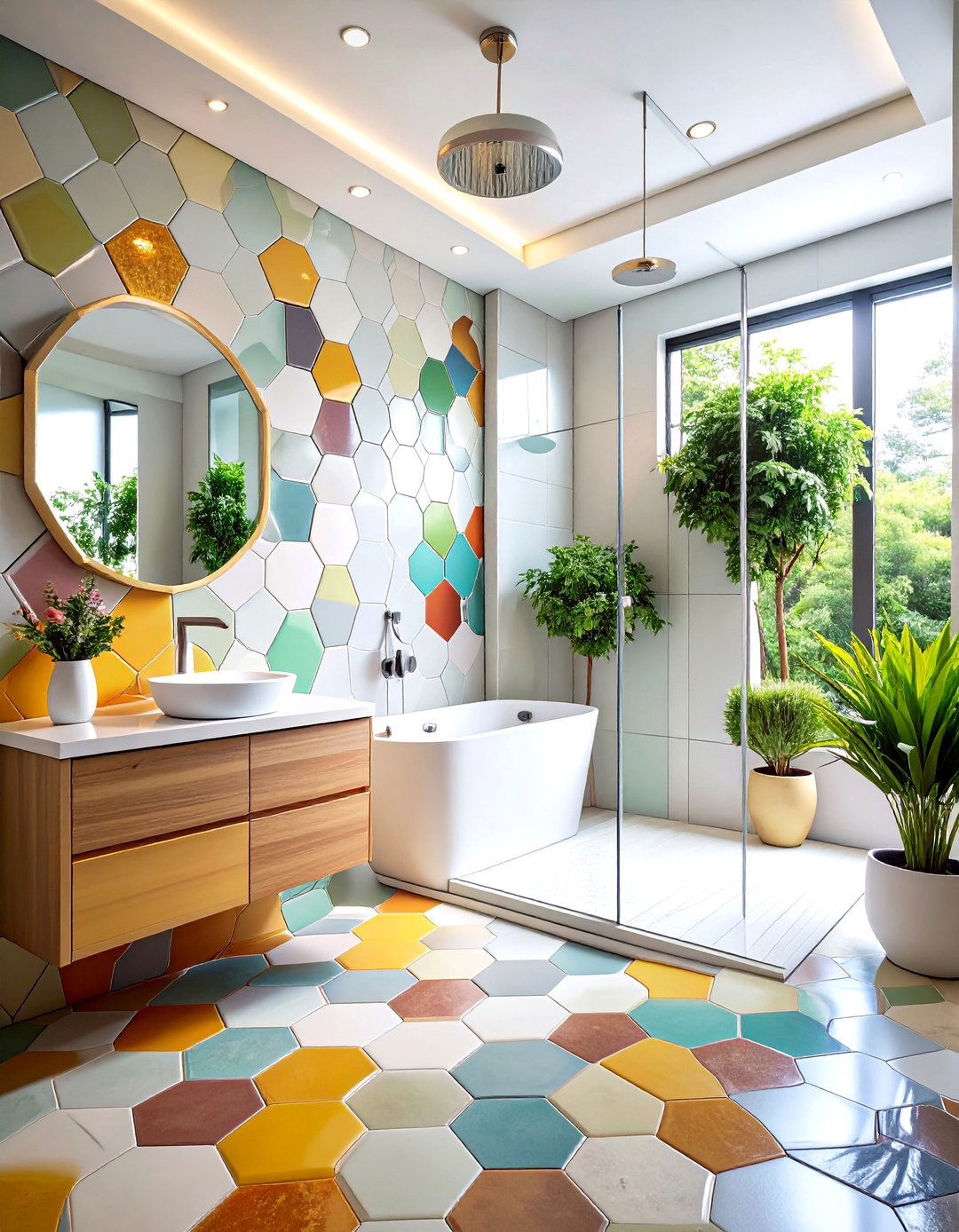

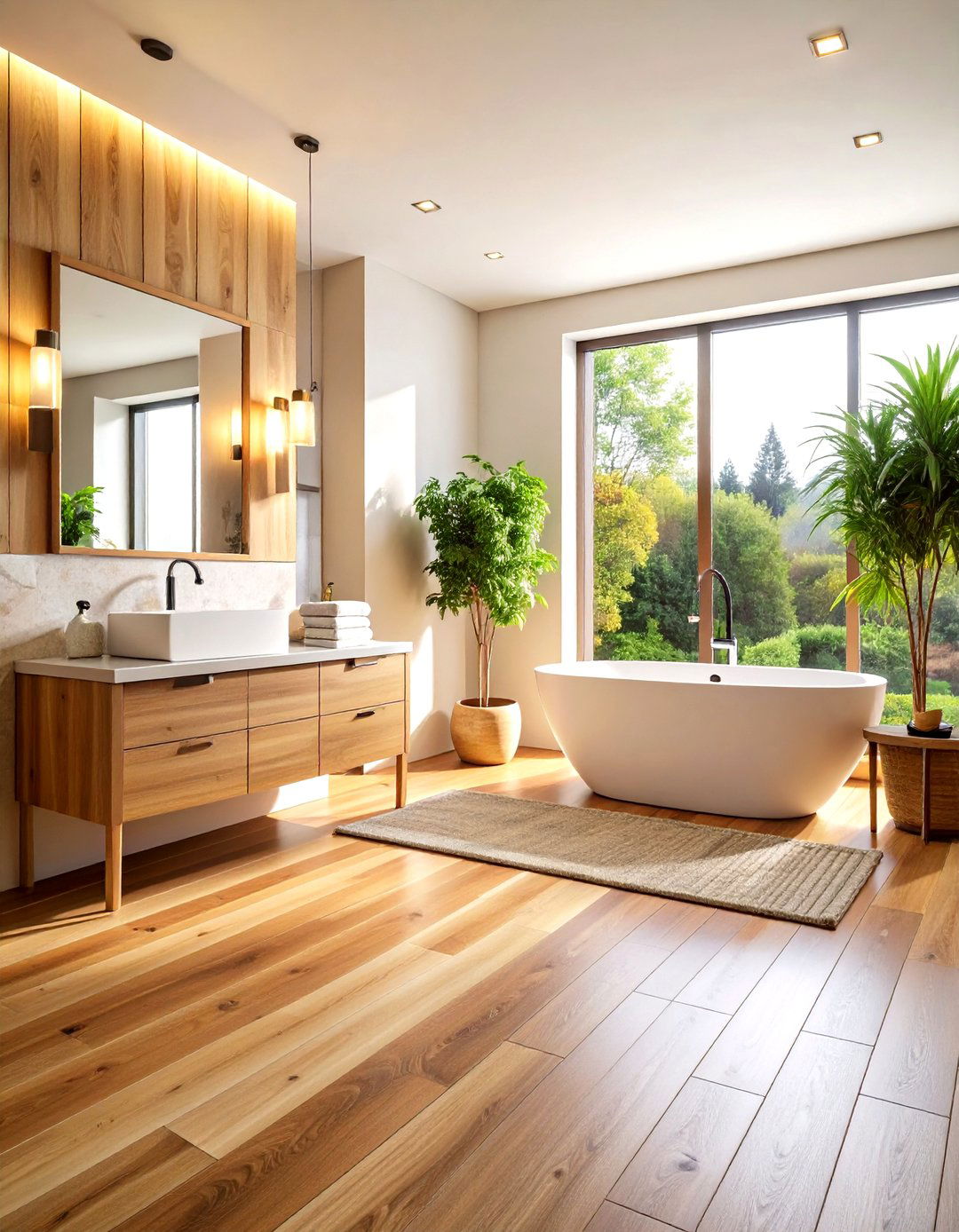
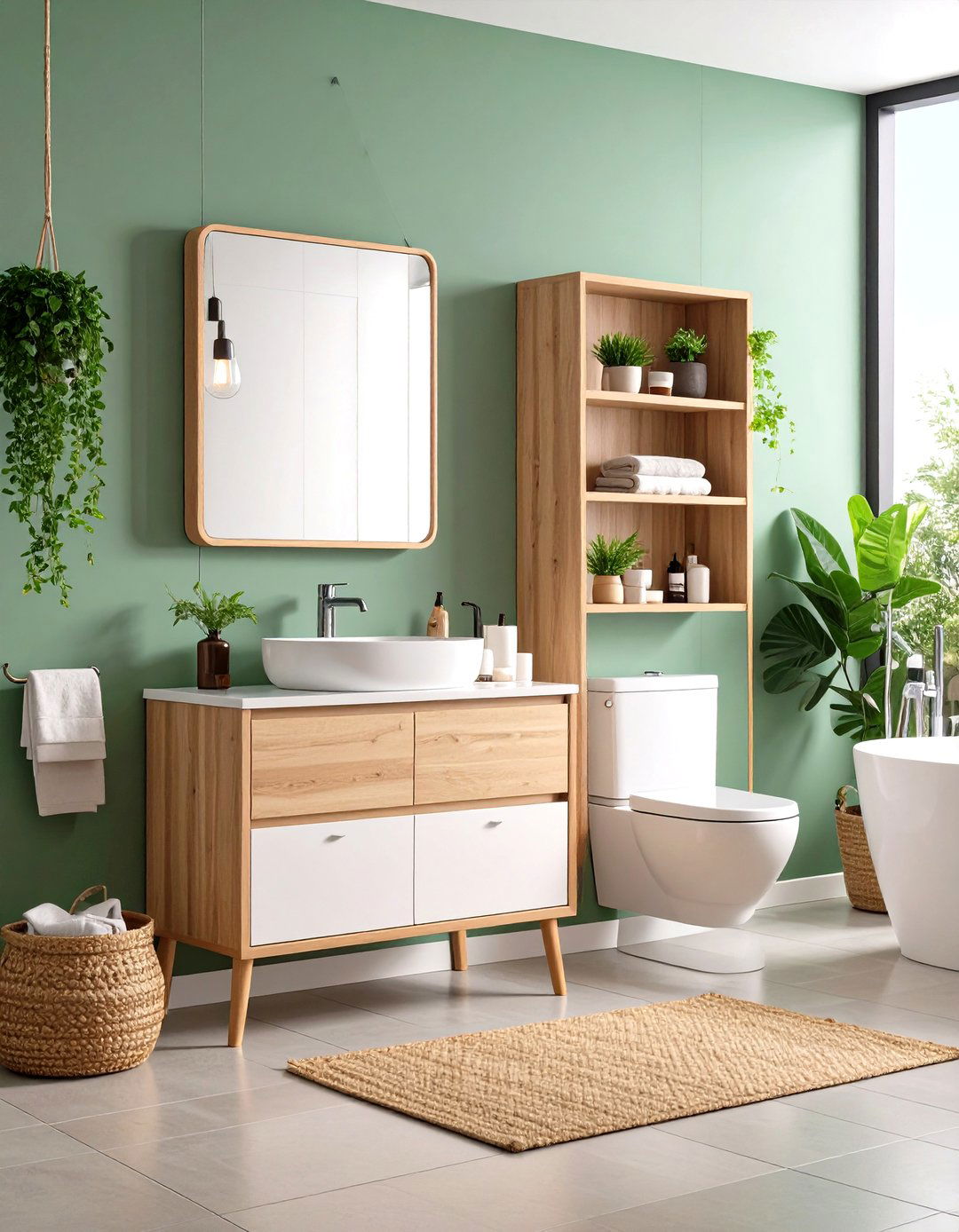

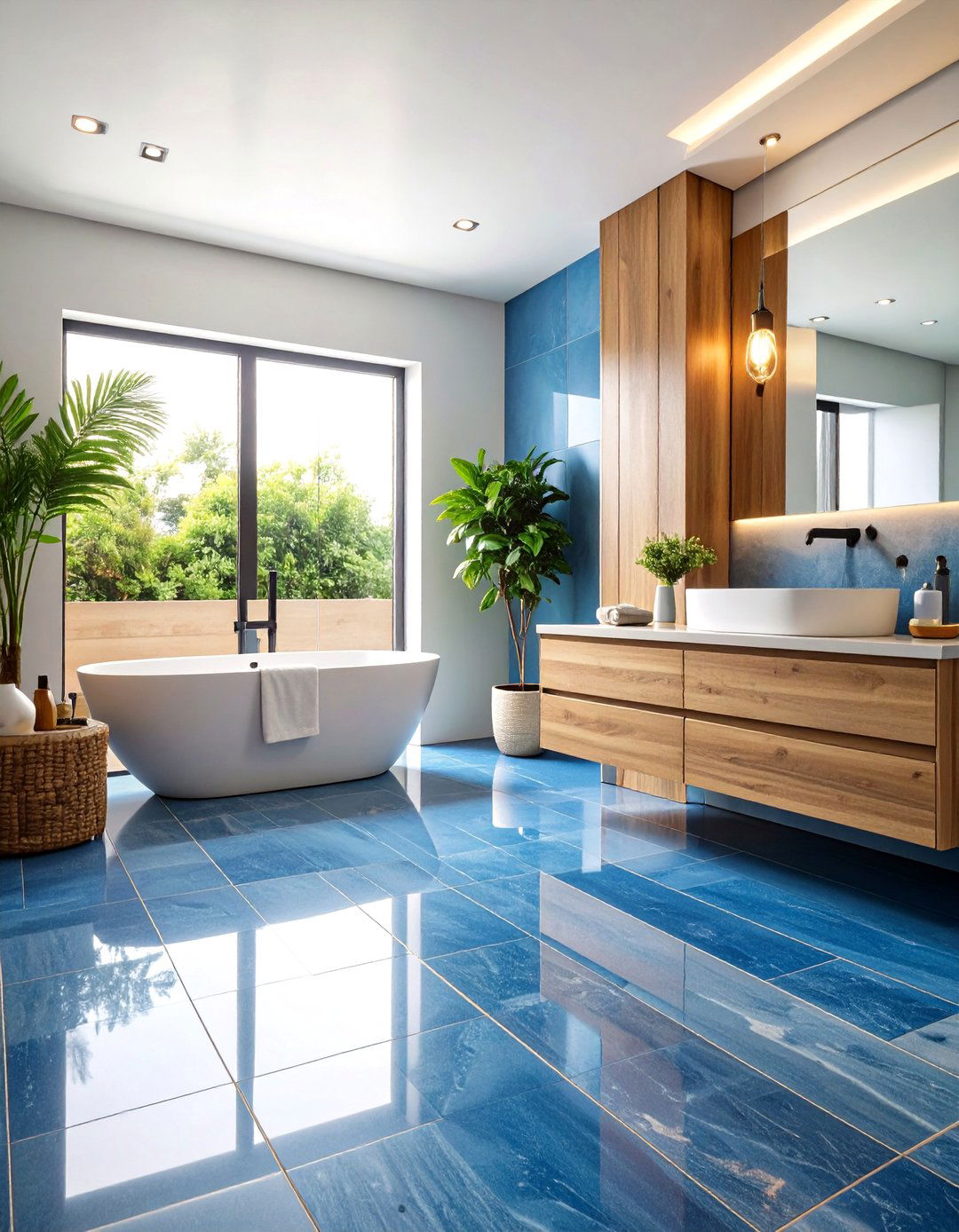
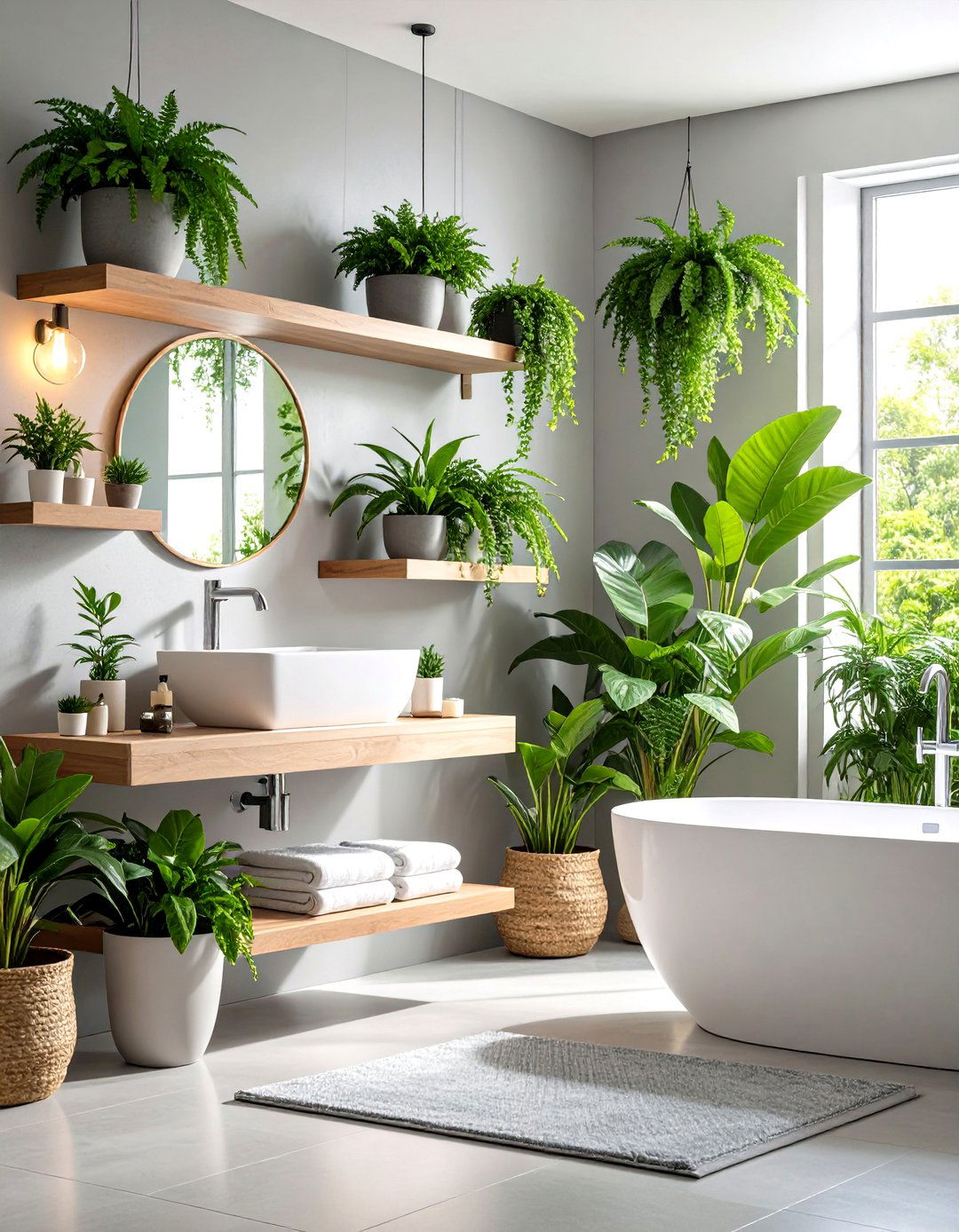
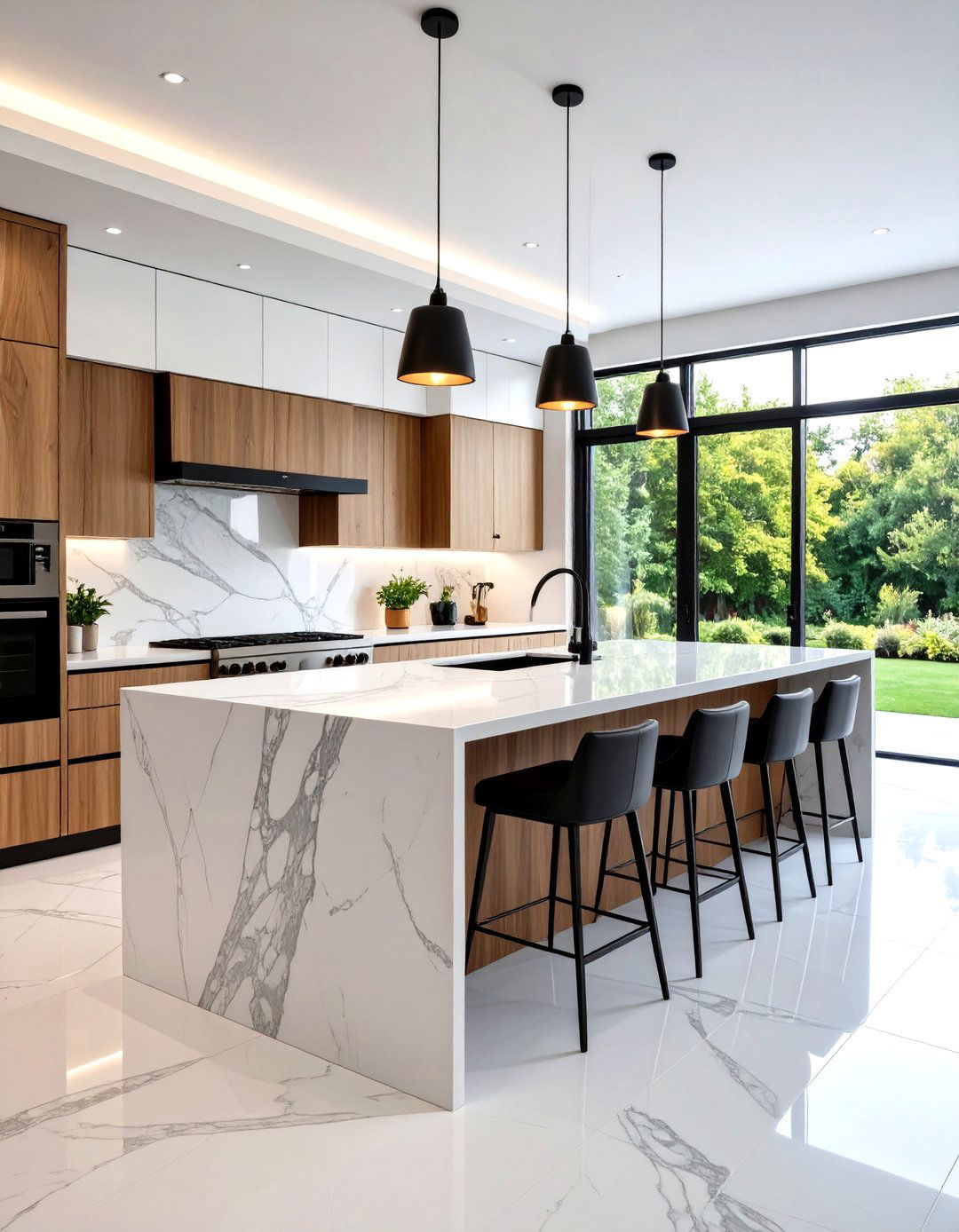
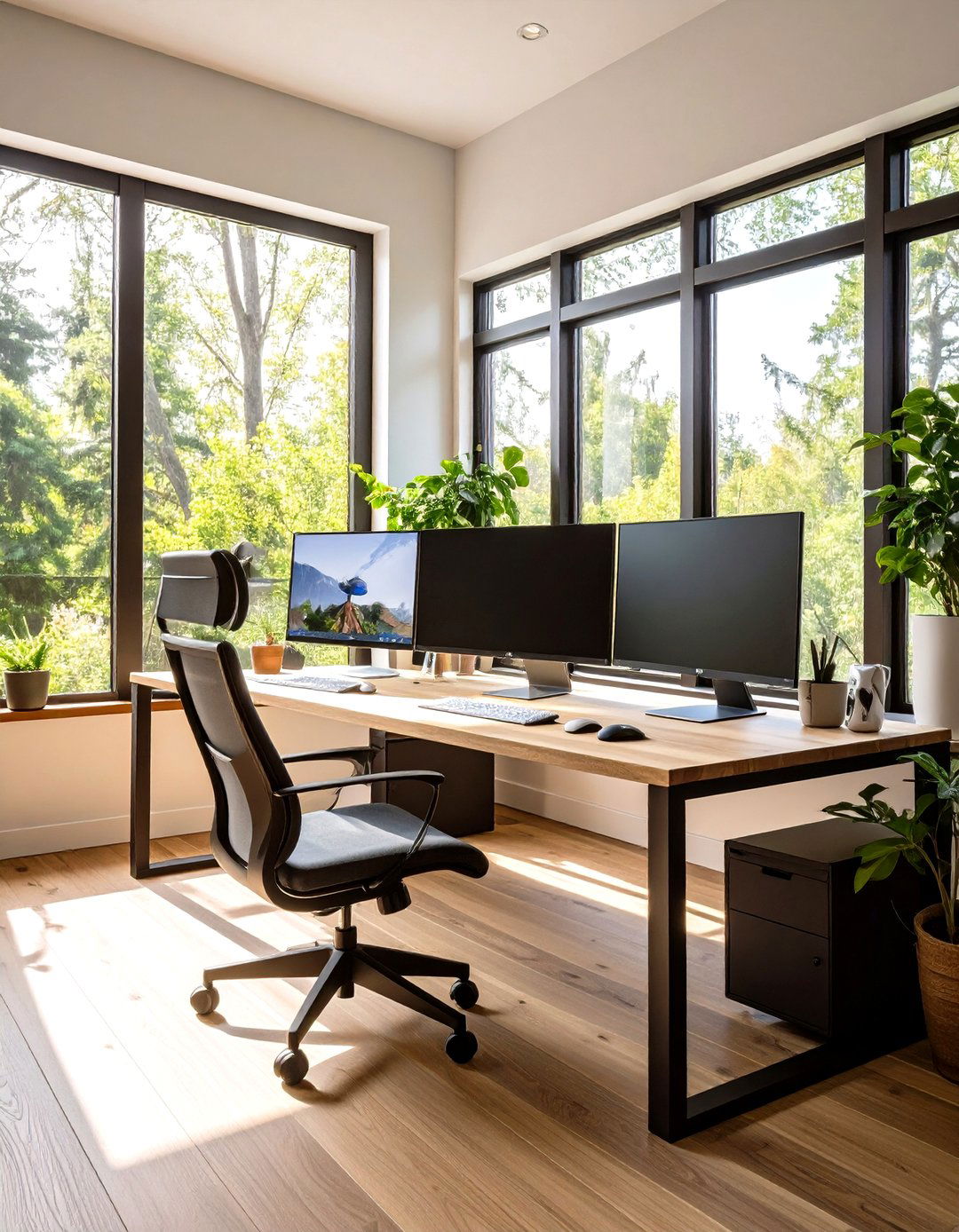
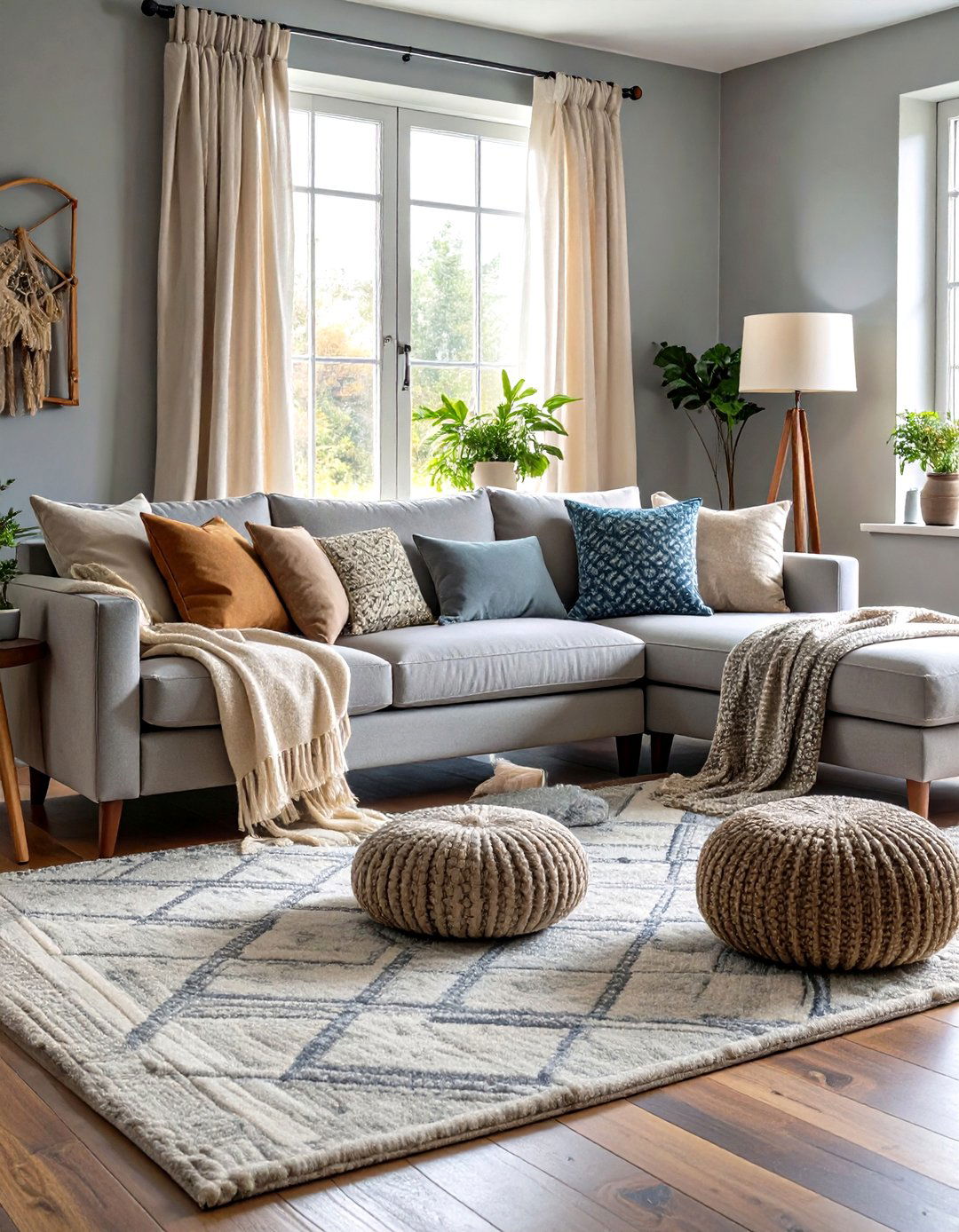
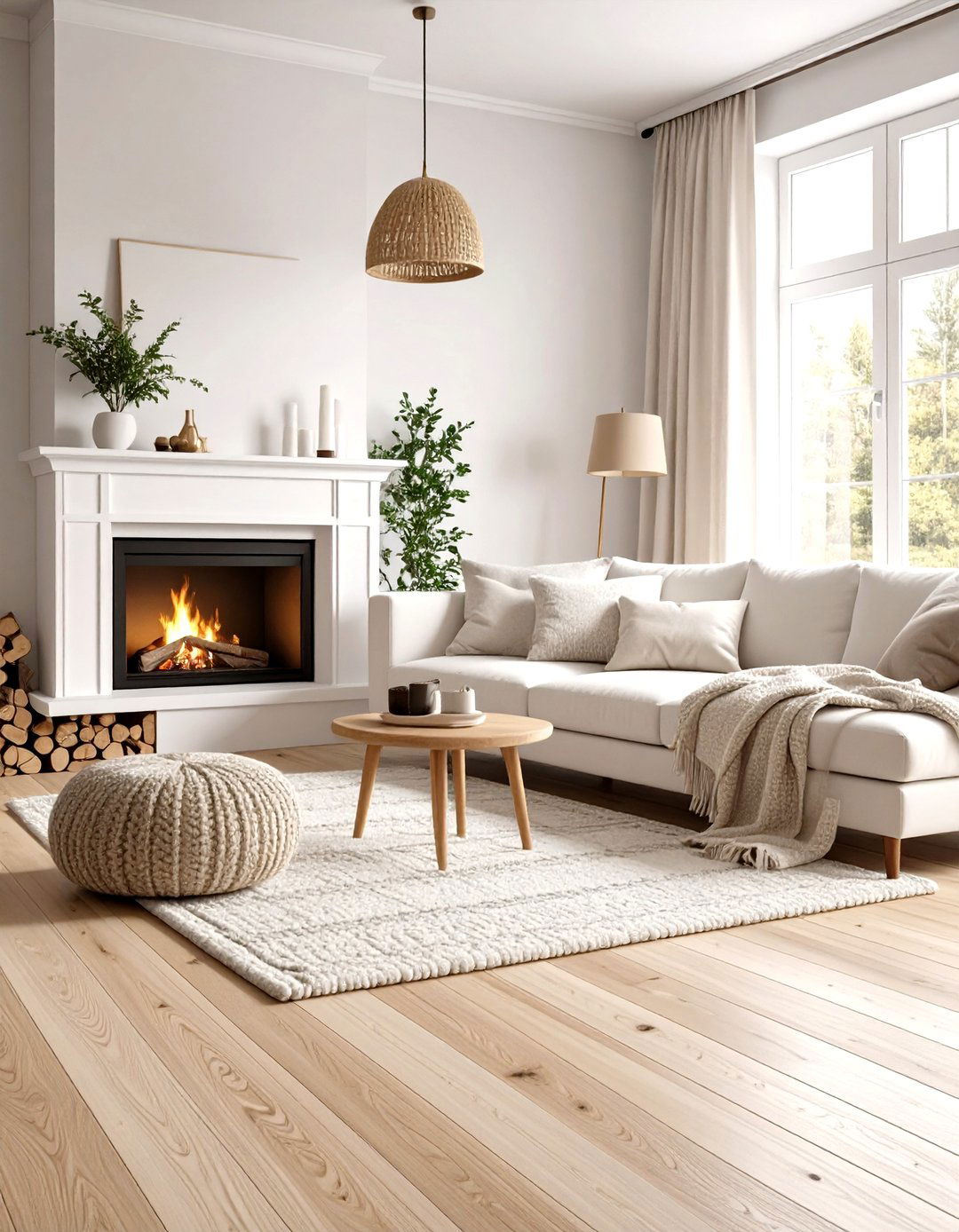
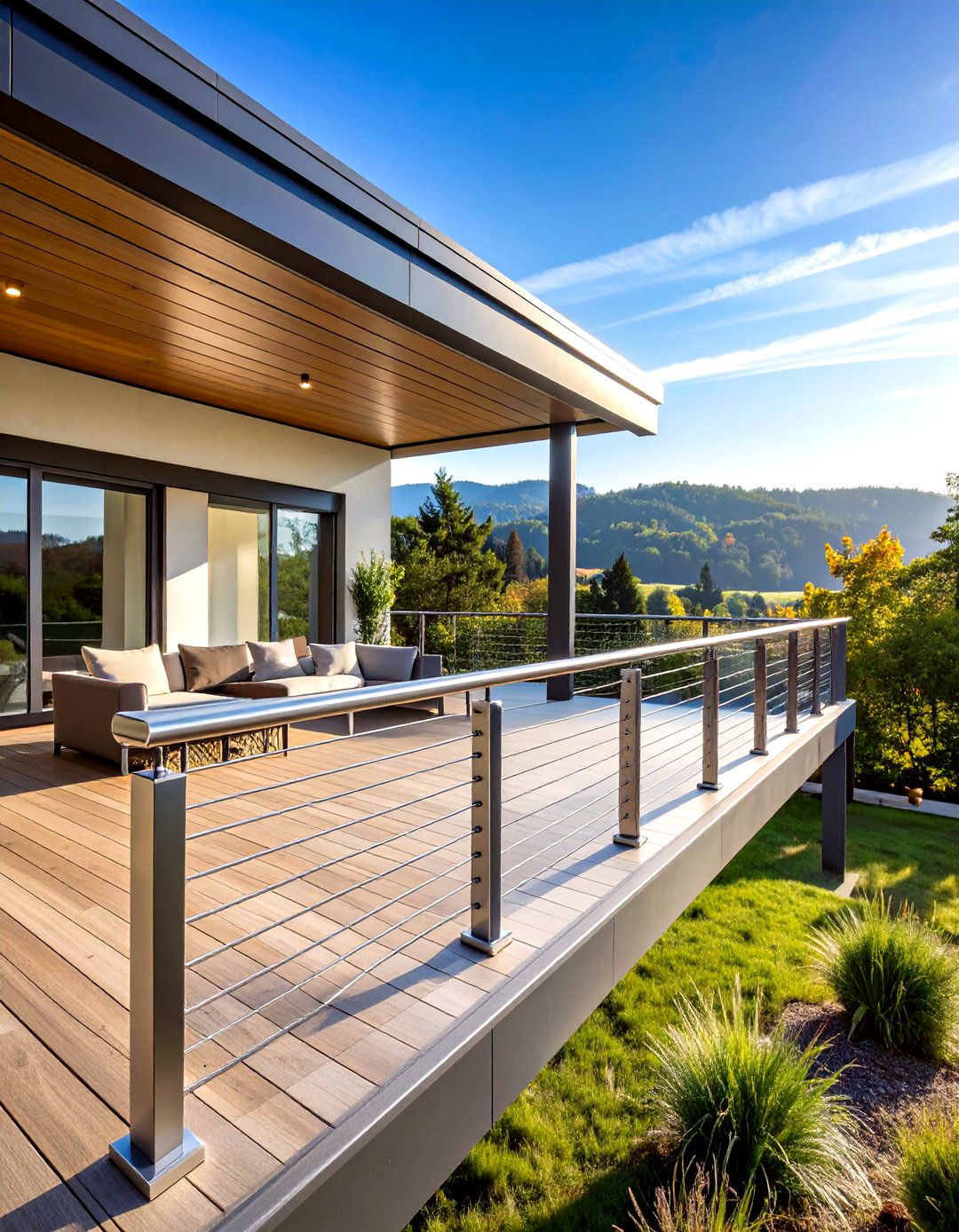
Leave a Reply